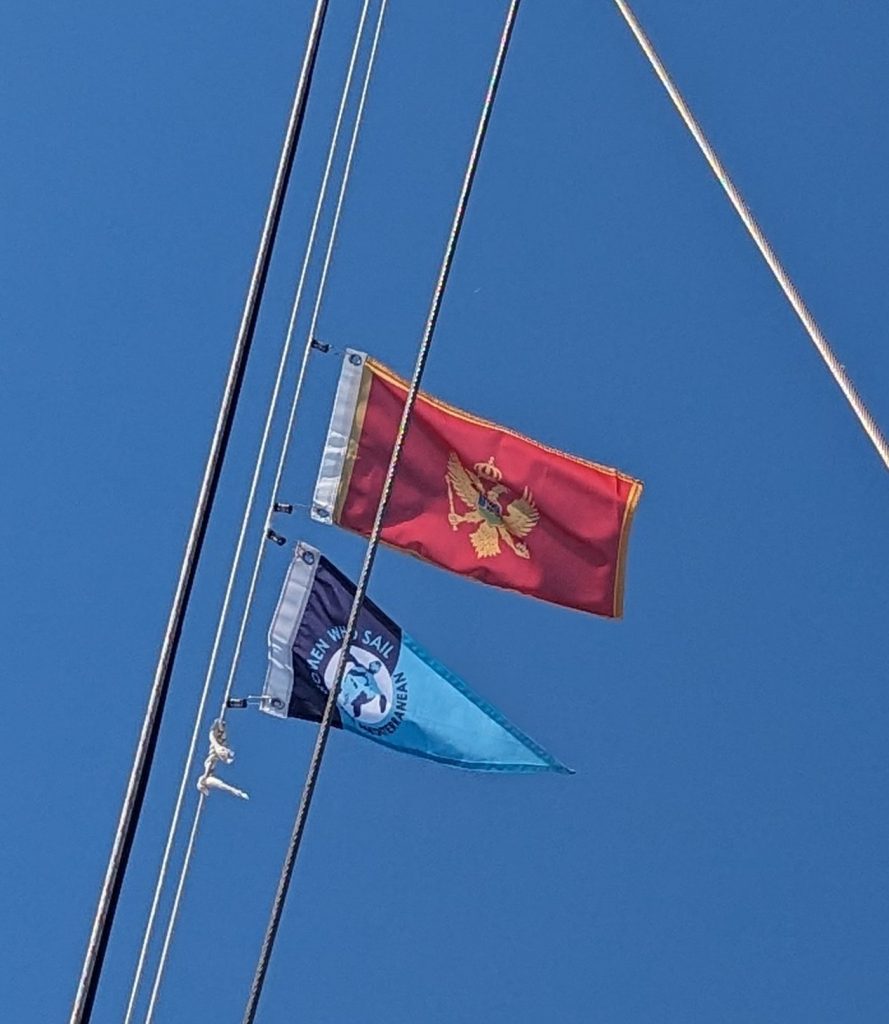The winds started to pick up the evening before. We knew that they were predicted to pick up a bit, but did not expect what Mother Nature delivered! We got out of bed at one point and let out more anchor rode. It was a rocky night. We were safe but very much on watch and didn’t get as much sleep as a result.
We headed to a marina for the next day on the 4th. We planned to stay there for two days, as the winds were predicted to be strong that entire time. We headed into 40+ knot winds as we motored north in the Bay of Kotor. Thankfully, we didn’t have to go in that direction very far. Once we made a “left turn,” the winds were on our beam and we made great time!
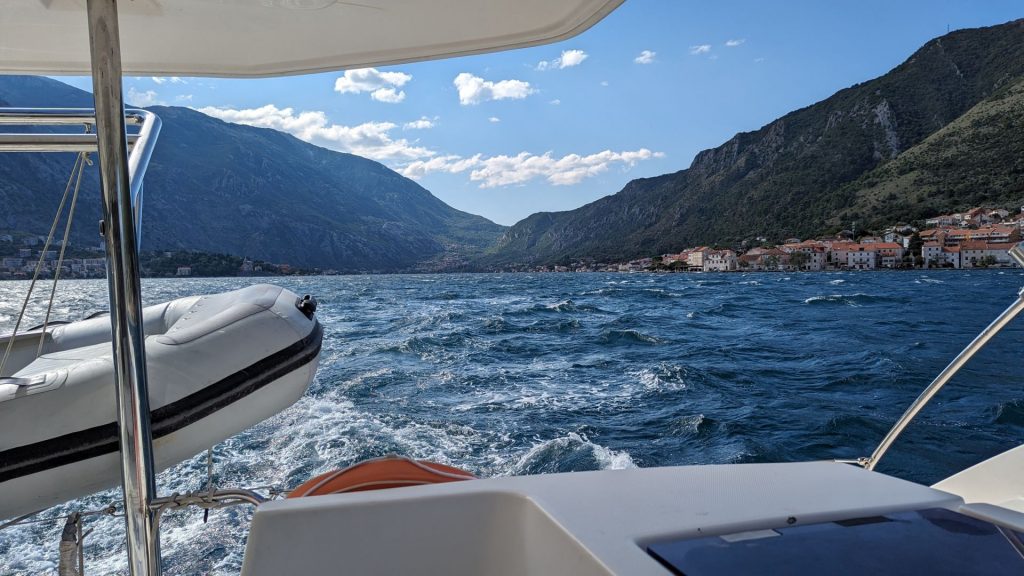
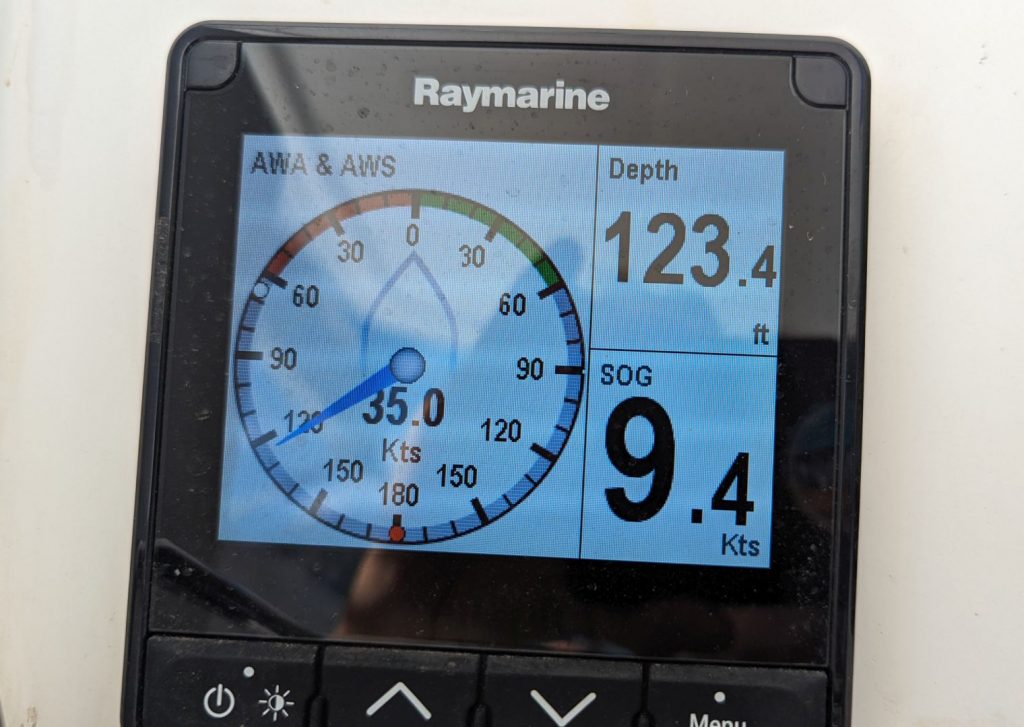
The winds were blowing us away from the dock as we tried to tie up. It took a few tries to get close enough to toss the lines to the three guys on the dock, but we finally made it.
Once firmly tied to the dock, I gently reminded Michael that I’d told him the day before that we should have gone to the marina then. I am always so thoughtful by reminding him when I am right. I am certain that he appreciates it. 😉 😉
We decided to hang out on the boat that day. And we ended up hanging out the next day as well. The main reason is because we weren’t in a hurry. We’d realized that we needed to spend more time in Montenegro so the “Schengen clock” wouldn’t start until we wanted it to start. We were thrilled to spend more time in this beautiful country!
Here is a picture of the promenade by the marina and Seahike’s location at the end of the dock.
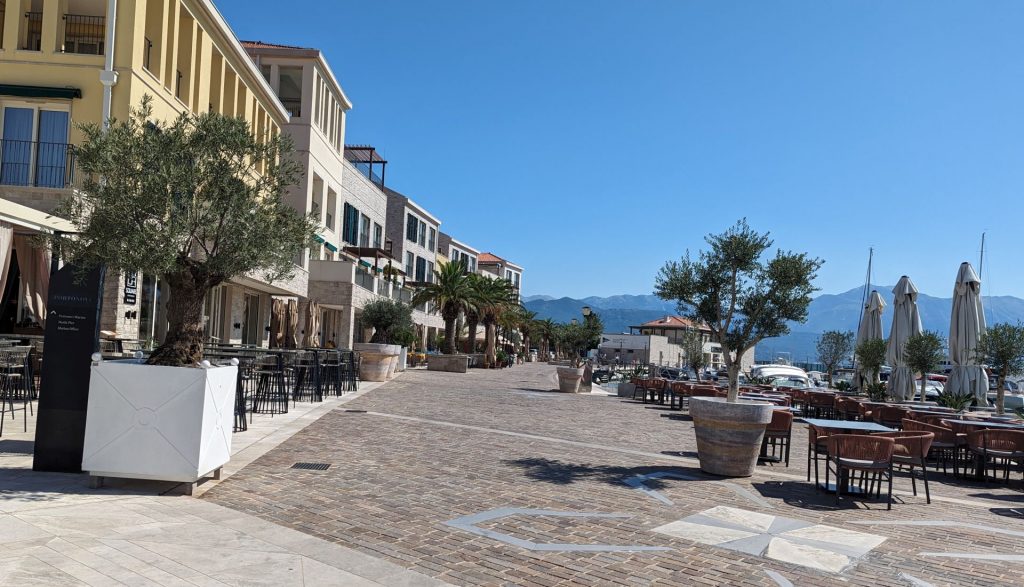
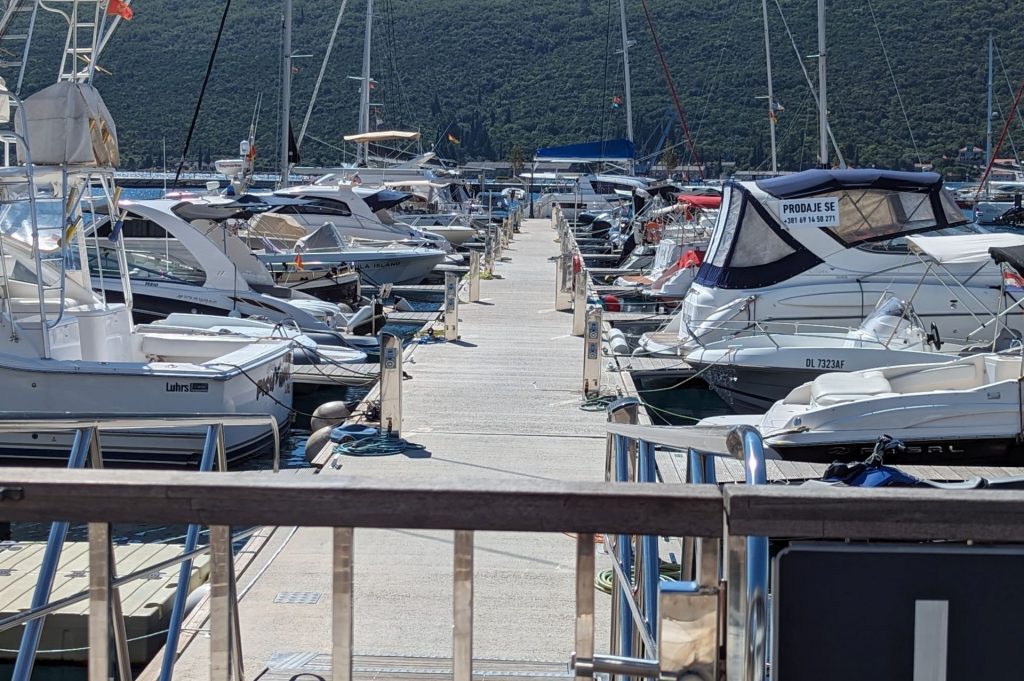
We considered staying a third night, but the marina was quite expensive and the winds were predicted to let up later in the day. We planned to anchor near Perast, but I wanted to put out a fair amount of rode in case the winds picked up, and we discovered that the small bay didn’t allow for that.
We ended up anchoring in the northern end of the Bay of Kotor at Risen (also spelled Risan). We had read various things and warnings about this anchorage, including not to anchor right near the bridge, and that winds could be very strong coming down off the mountain. We anchored in about 15 feet of water with good holding. There was very little wind the two days/nights we were there (the 6th and 7th).
A tiny bit of information about Risen: Risen traces its origins to the ancient settlement of Rhizon, the oldest settlement in the Bay of Kotor. Lying in the innermost portion of the bay, the settlement was protected from the interior by inaccessible limestone cliffs of the Orjen mountains which are the highest range of eastern Adriatic, and through several following narrow straits in the Bay of Kotor from the open sea.
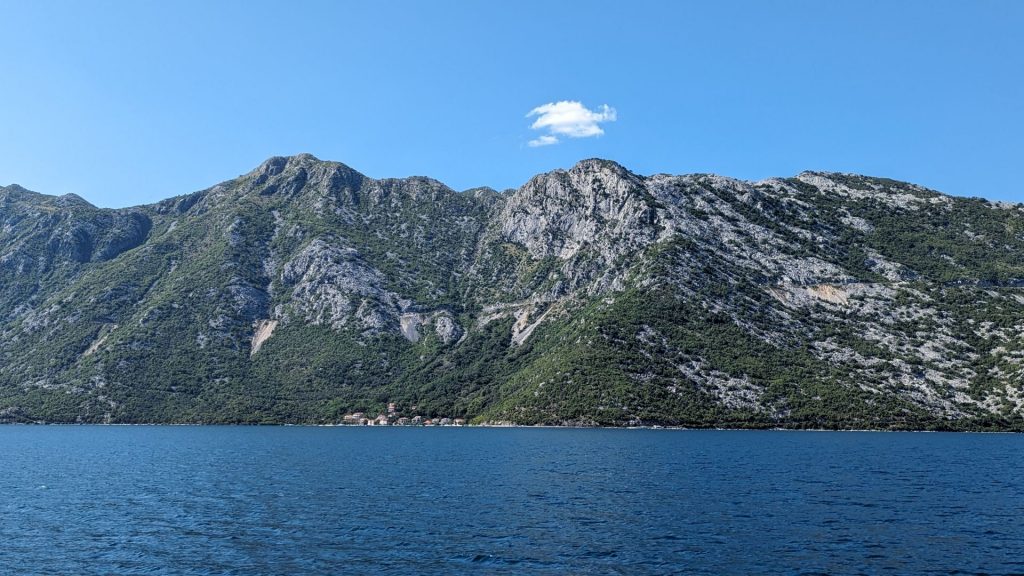
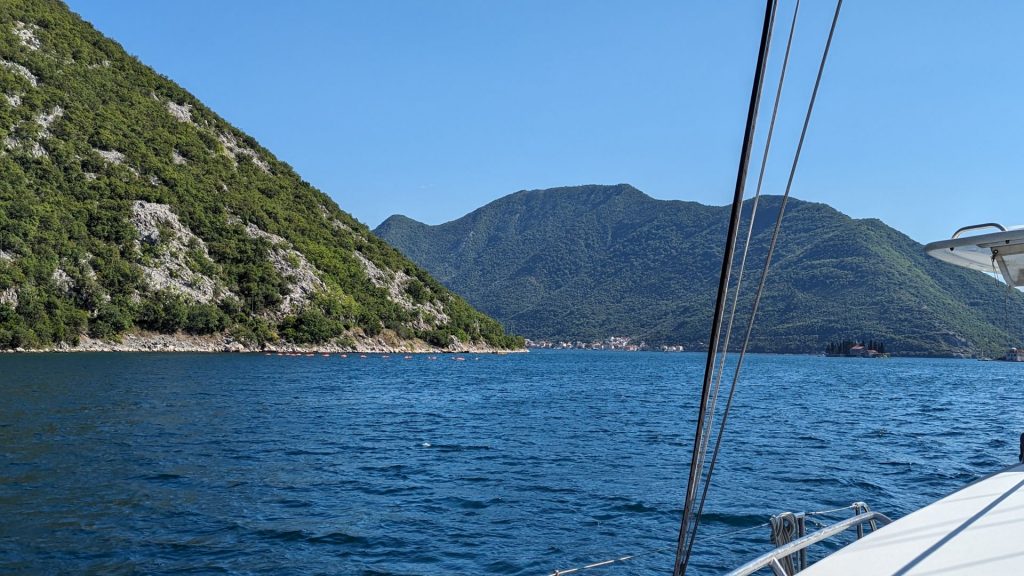
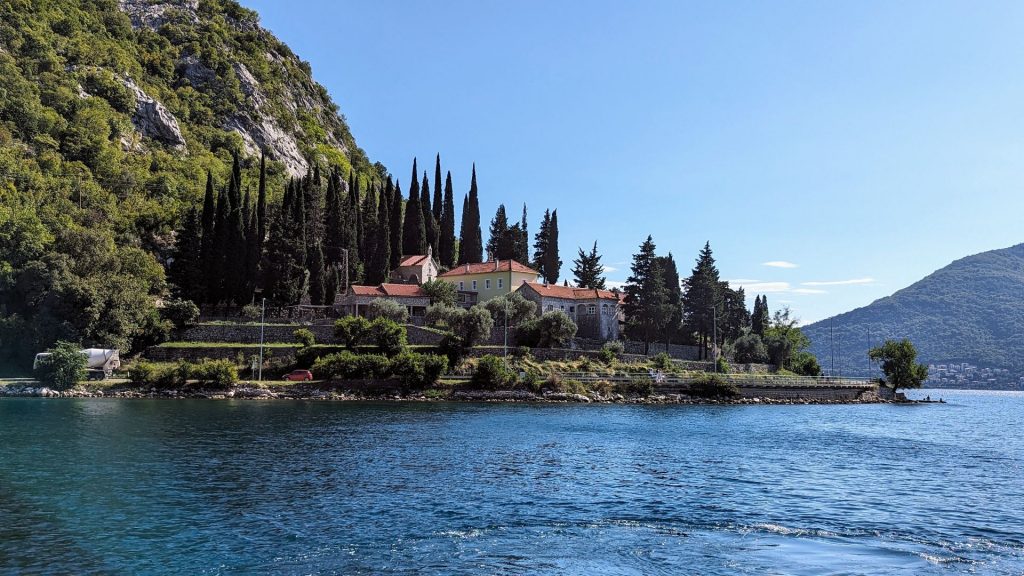
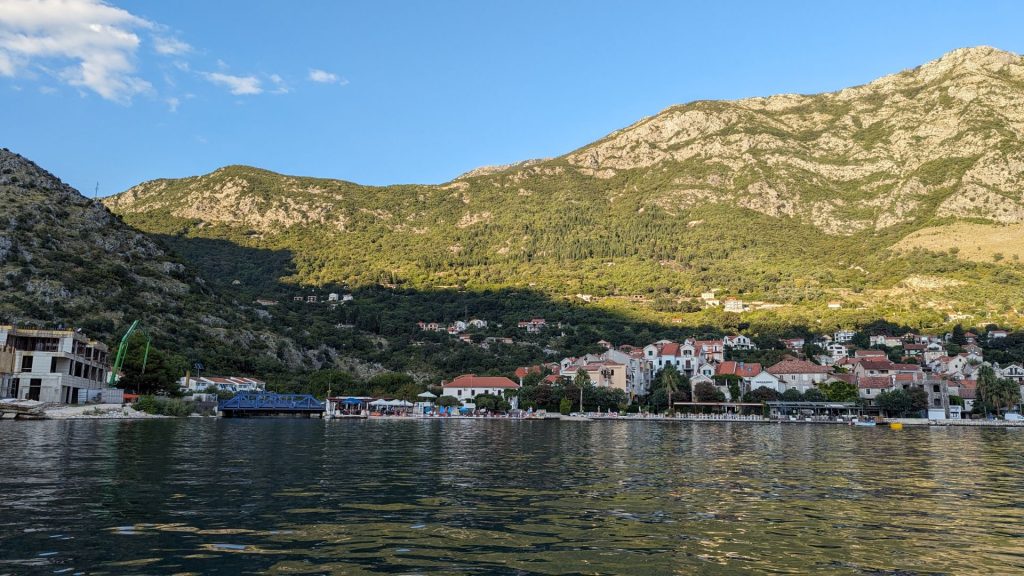
We took the dinghy in and ate dinner at Cafe Bar & Restaurant Ponta. Oh. My. Gosh. The setting was perfect and so was the food! There are some oyster farms near Risen, so Michael’s oyster pasta contained the freshest oysters around! My chicken with cream sauce and roasted veggies were also very good. And the price was right.
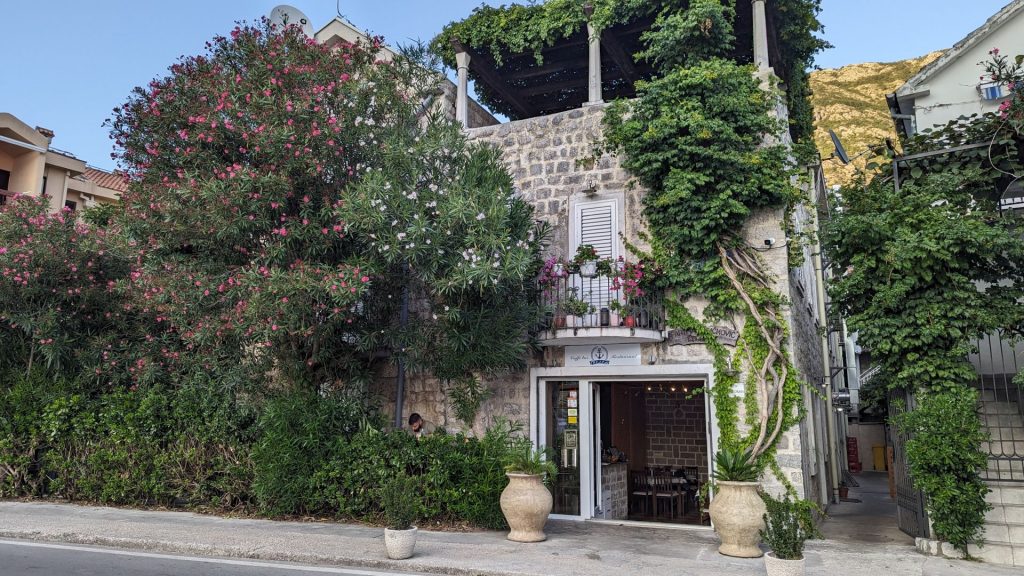
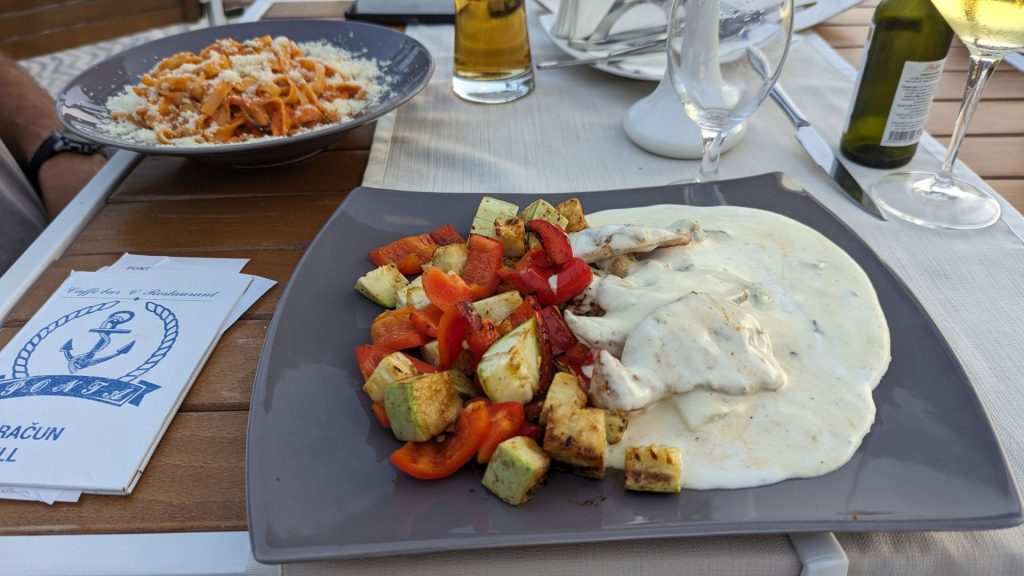
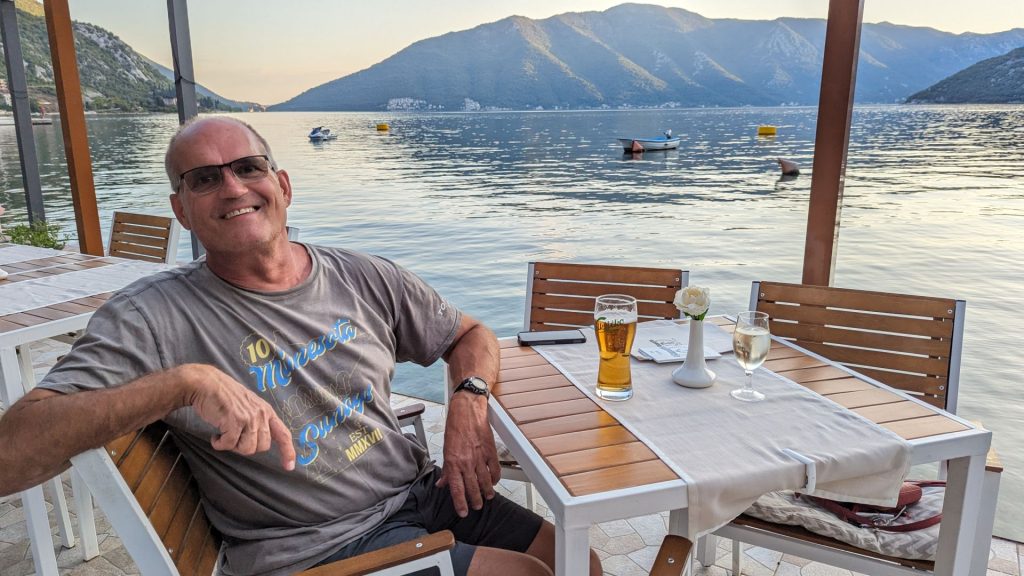
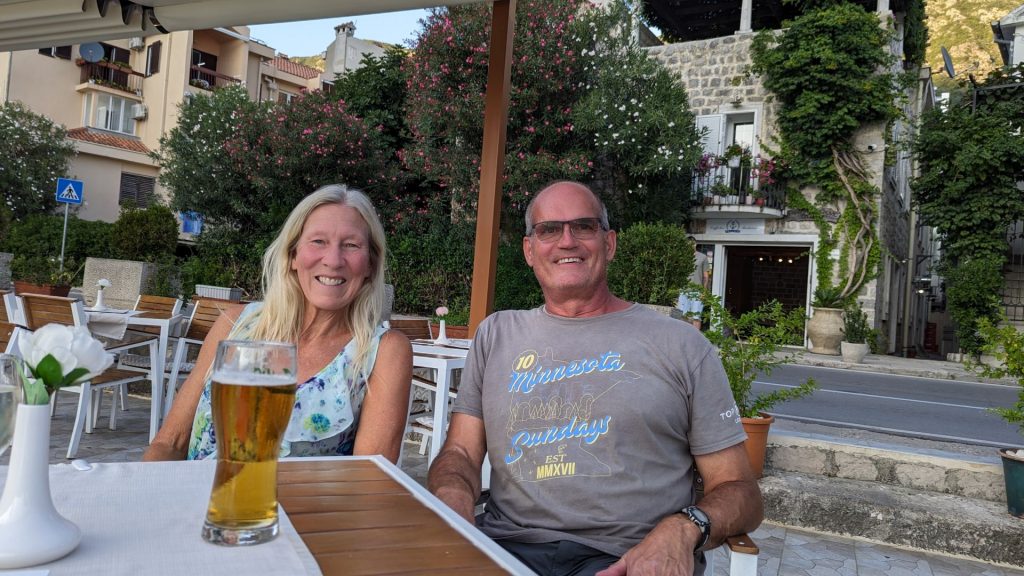
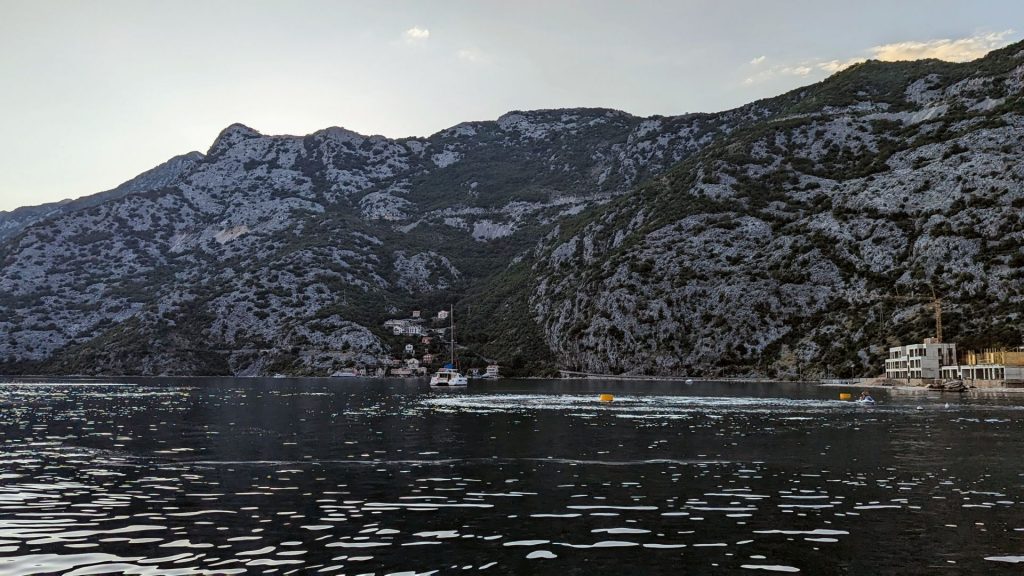
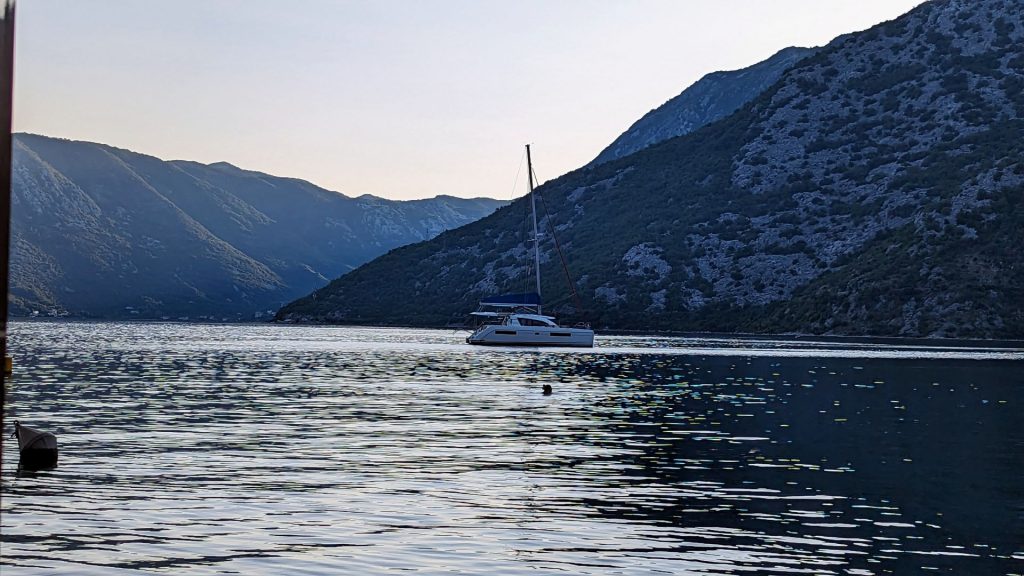
We’d planned to take the bus into Perast the next day (the 7th), but the bus never arrived. We waited for 20 minutes then took a taxi.
Perast (pronounced like Paris with a “t” at the end) is known for its many palaces and churches. It is protected as a UNESCO World Heritage Site in an area of outstanding natural beauty. This tiny town boasts 16 churches and 17 formerly grand palaces. I had five palaces and two churches on our list as possible sites to visit. We ended up visiting one palace, then Michael waited while I visited one church on the mainland, then we took a water taxi to the Lady of the Rocks Church.
The palace we visited was a good choice: the Bujovic Palace (a.k.a. Palača Bujović). This is also known as the Perast City Museum, as the interior is now a. . . museum. According to tradition, this Renaissance Baroque palace was built in 1694 of hewn stone taken from the destroyed walls of Herceg Novi following its liberation from Turkish rule in 1687. It was designed by the Venetian architect Giovanni Baptista Fonte who also participated in its construction. It was owned by brothers Ivan and Vicko Bujovic. The palace is one of the most beautiful edifices on the Adriatic coast. The museum’s collection is divided into ethnographic, historical-artistic, and maritime collections. The ethnographic collection is divided into sub-collections of weapons, costumes, jewelry, furniture, flags, and utility objects.
There was a LOT to see. Here are just a few pictures.
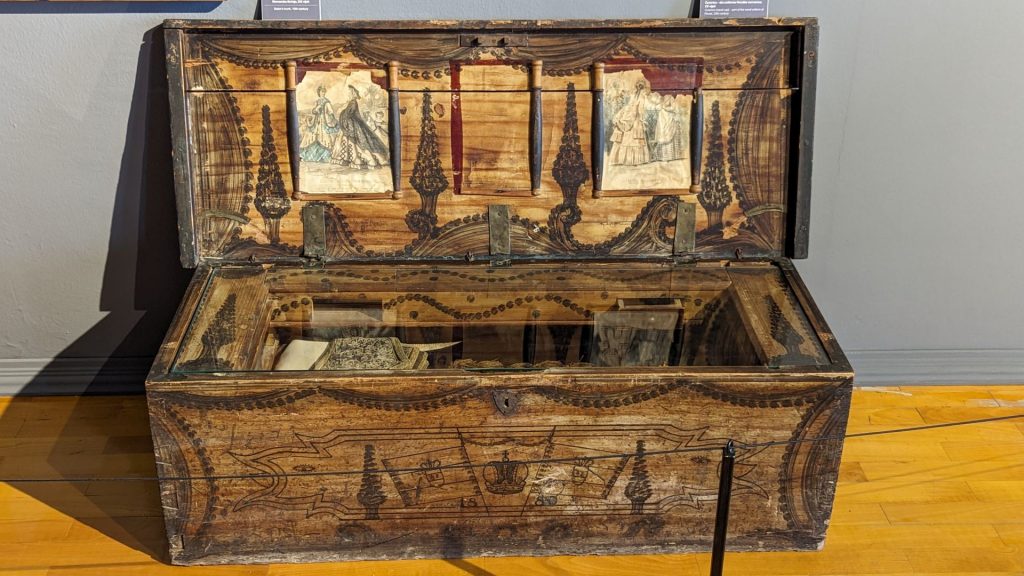
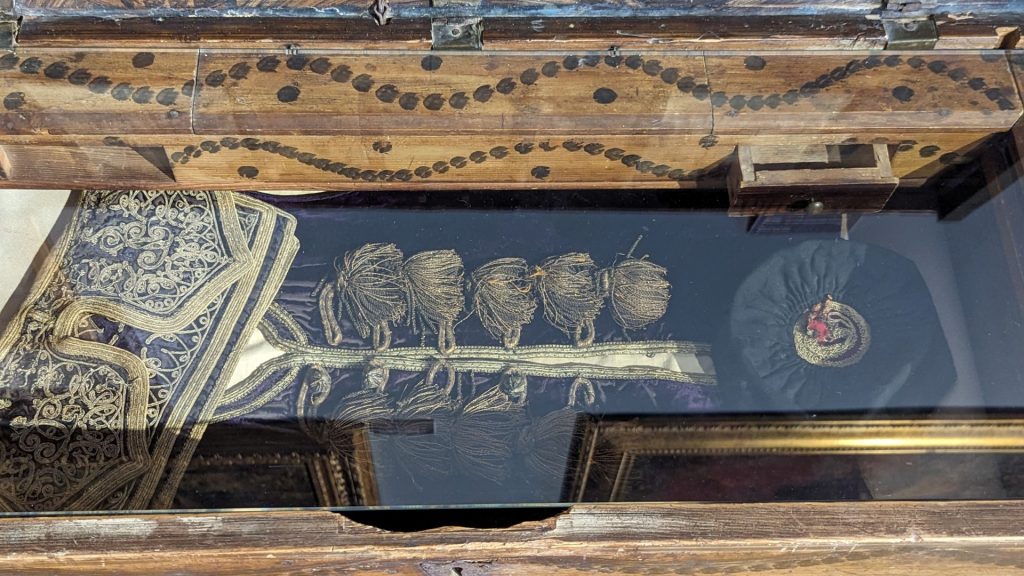
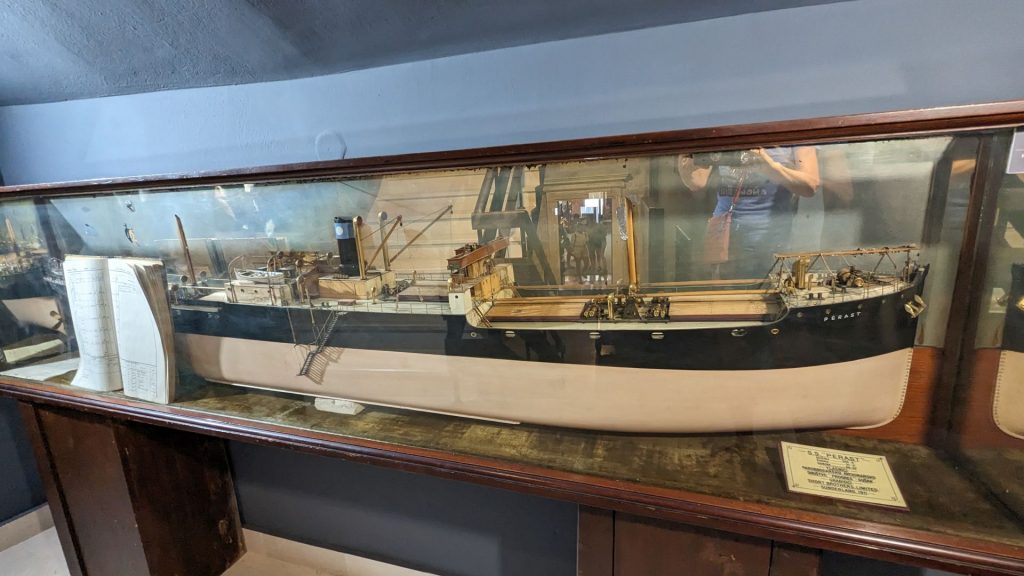
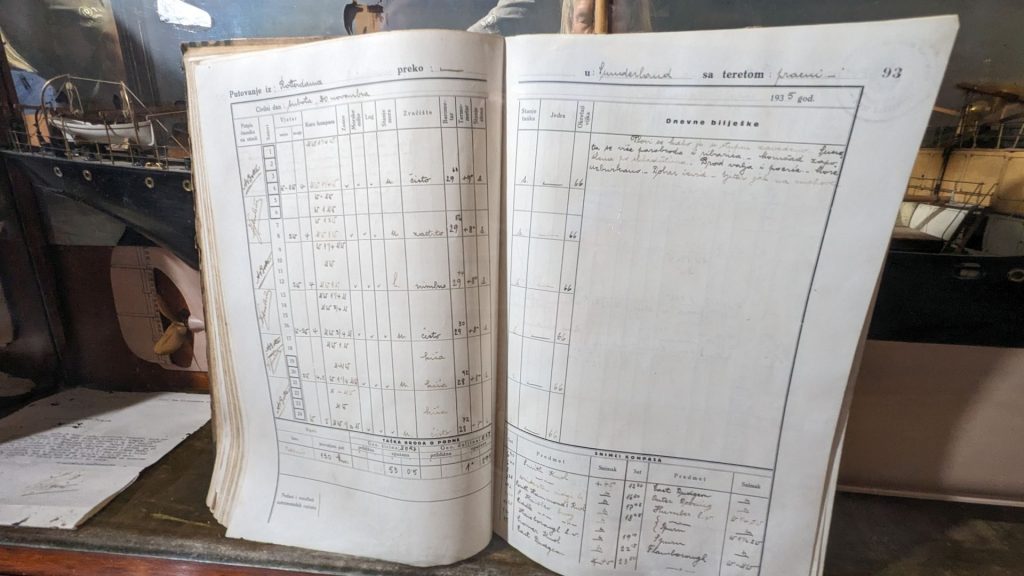
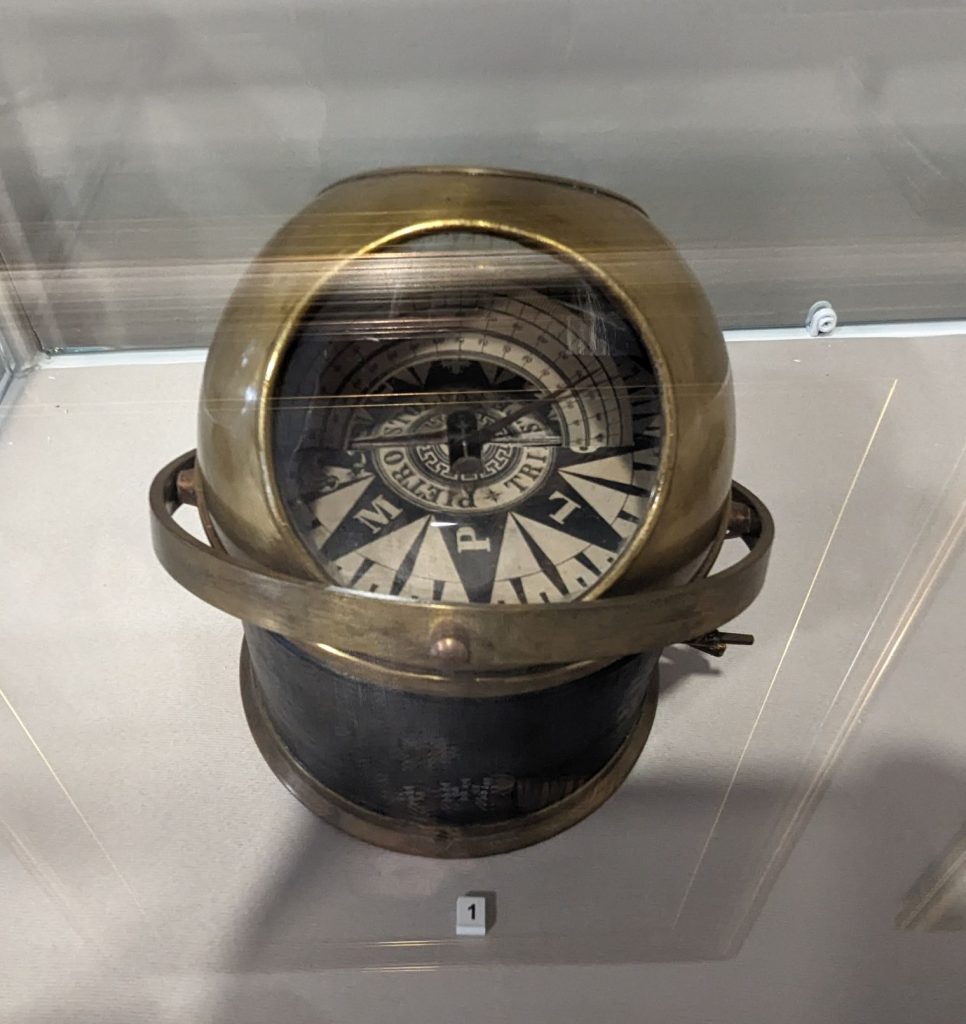
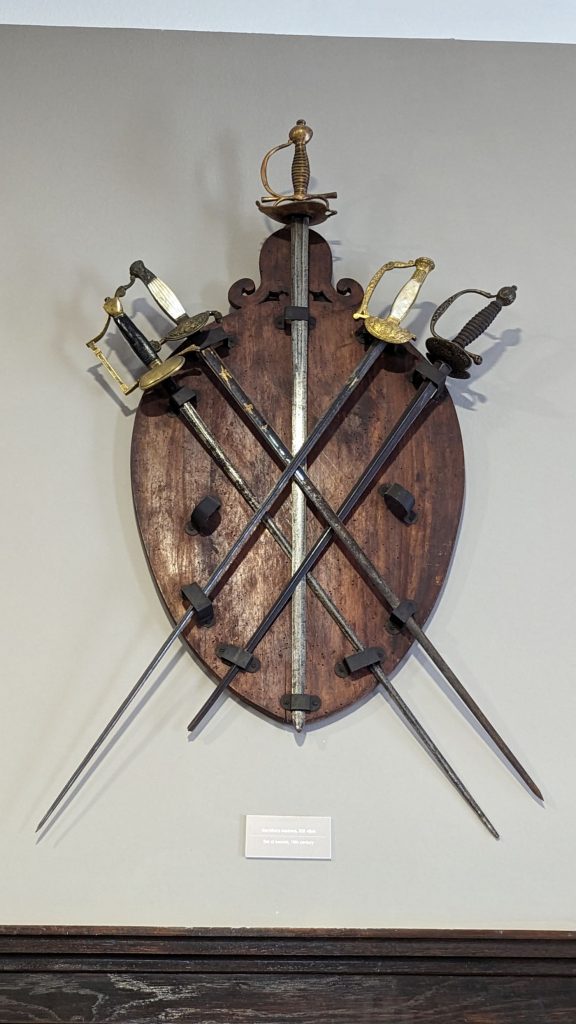
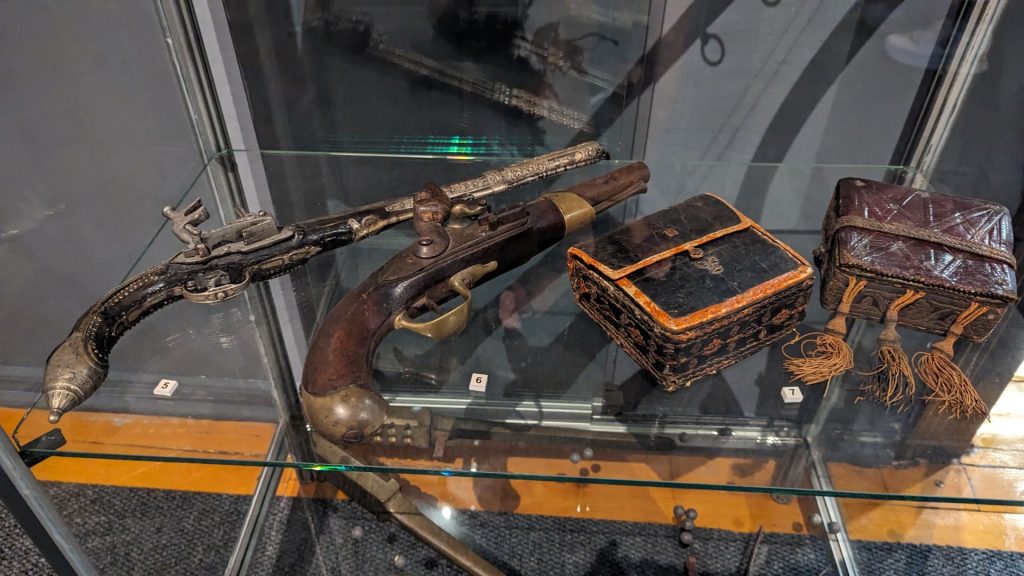
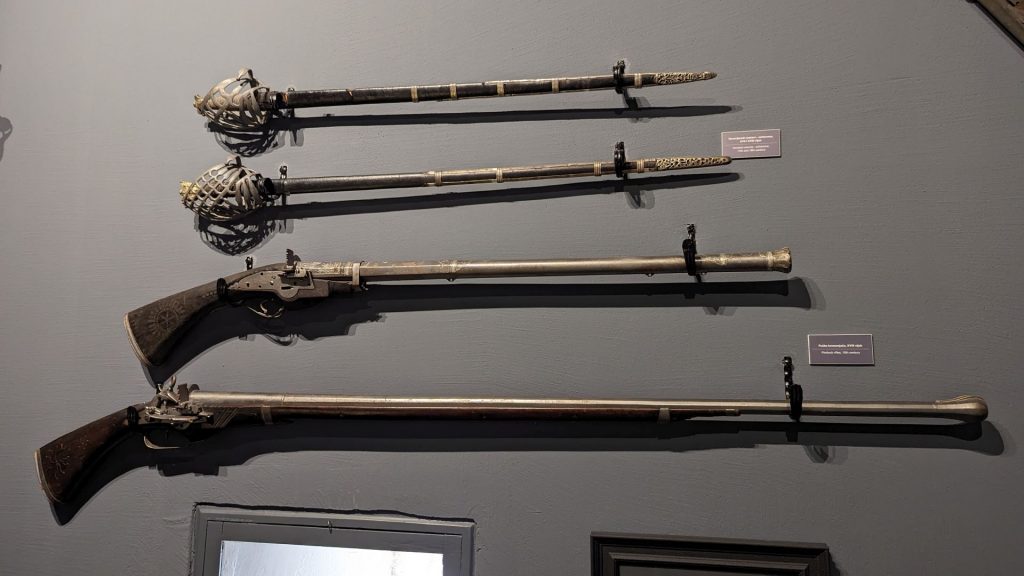
Flintlock rifles, 18th century.
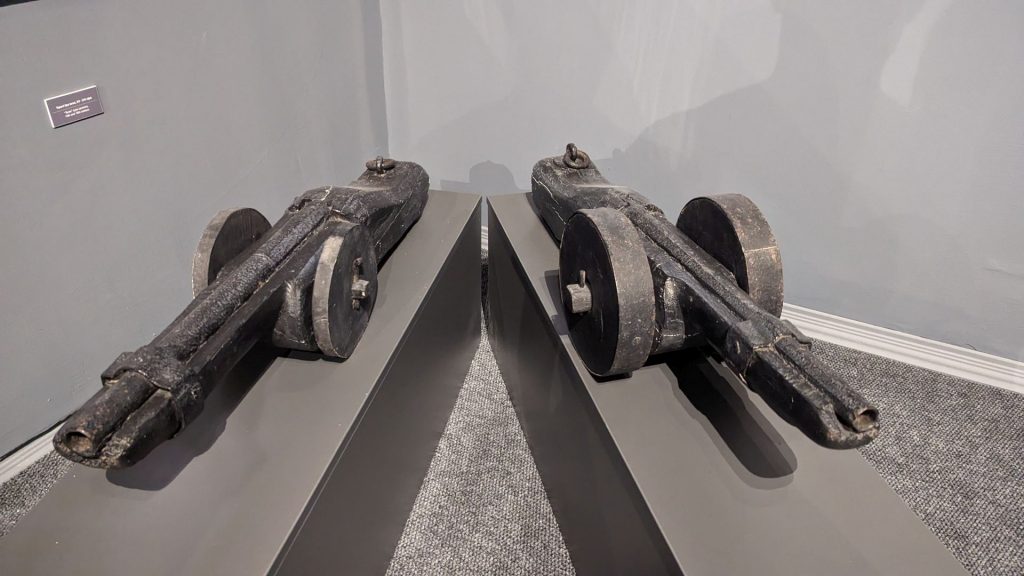
This is what the sign by the cannon pictured below says: “In the rich collection of firearms, this Venetian falconet type cannon, popularly known as Zelenko, stands out. It was made in Venice in the 16th century, and on July 4, 1677, was given as a gift to the young men of Perast to help them in learning military skills. The markings on the cannon are as follows: the Venetian lion as the symbol of Venice, the numeral X as the symbol of the Venetian authority of the Council of Ten, and the letter F as the foundry’s mark. There are only two other cannons in the world with the same foundry mark, one is in Istanbul and the other in Marmaris. What makes the Zelenko cannon so unique is the original carriage from the 17th century. The falconet cannon Zelenko is an immensely valuable reminder of Perast’s glorious past.”
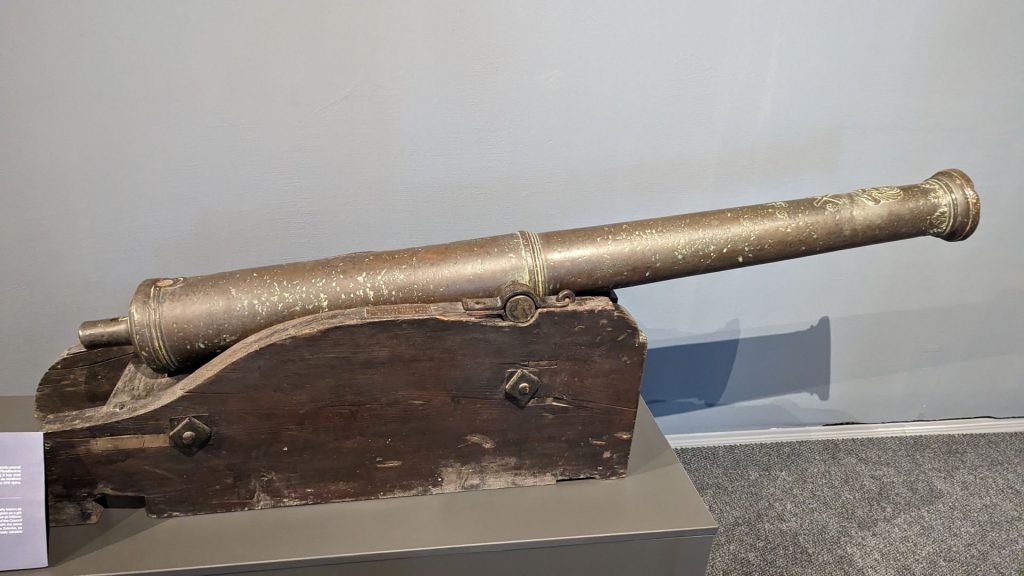
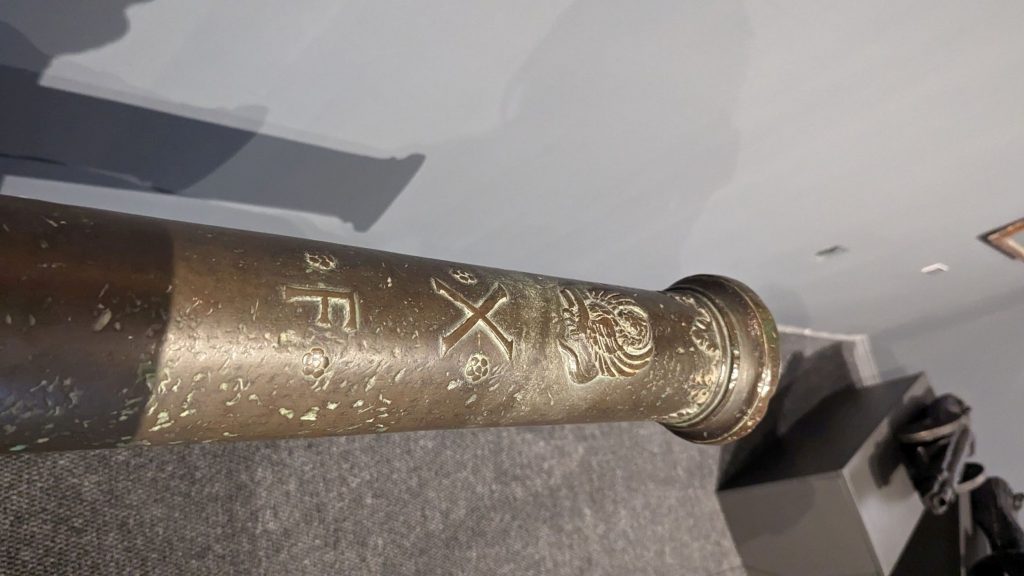
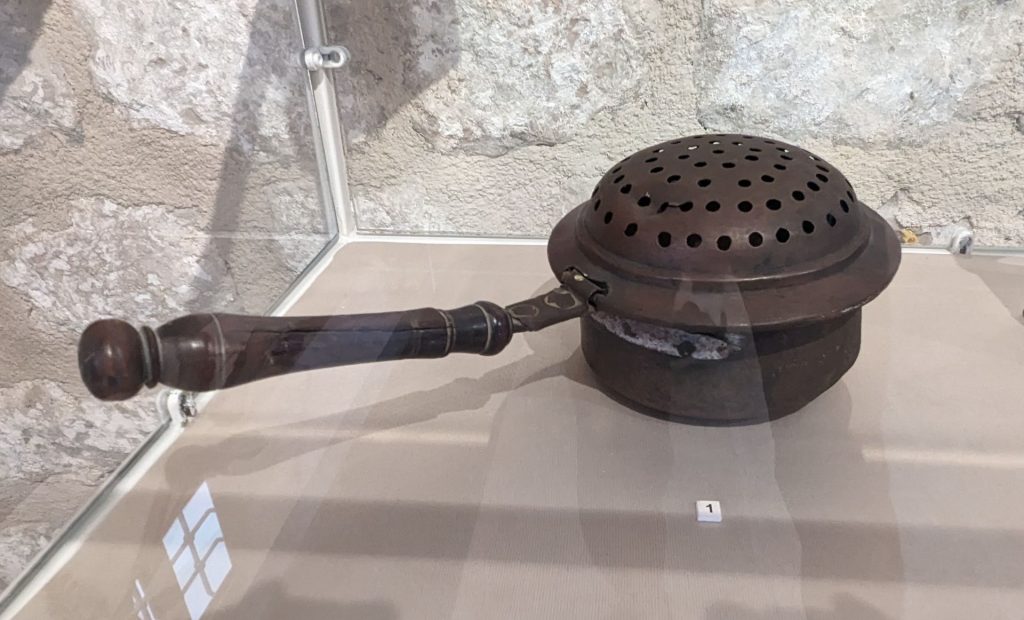
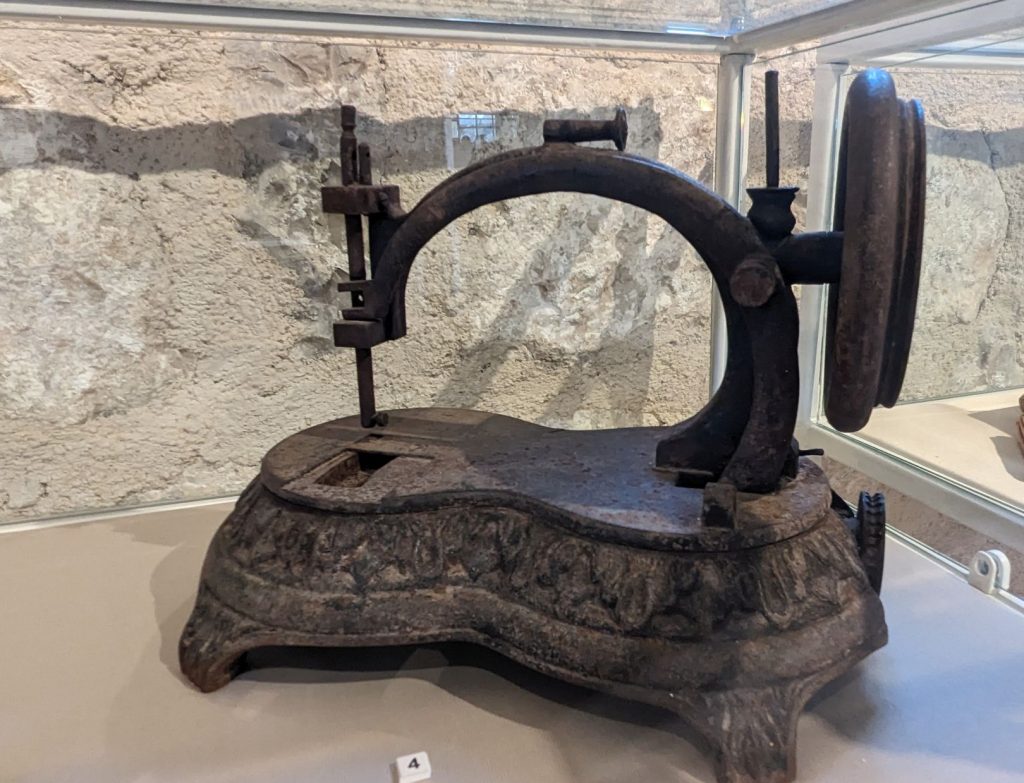
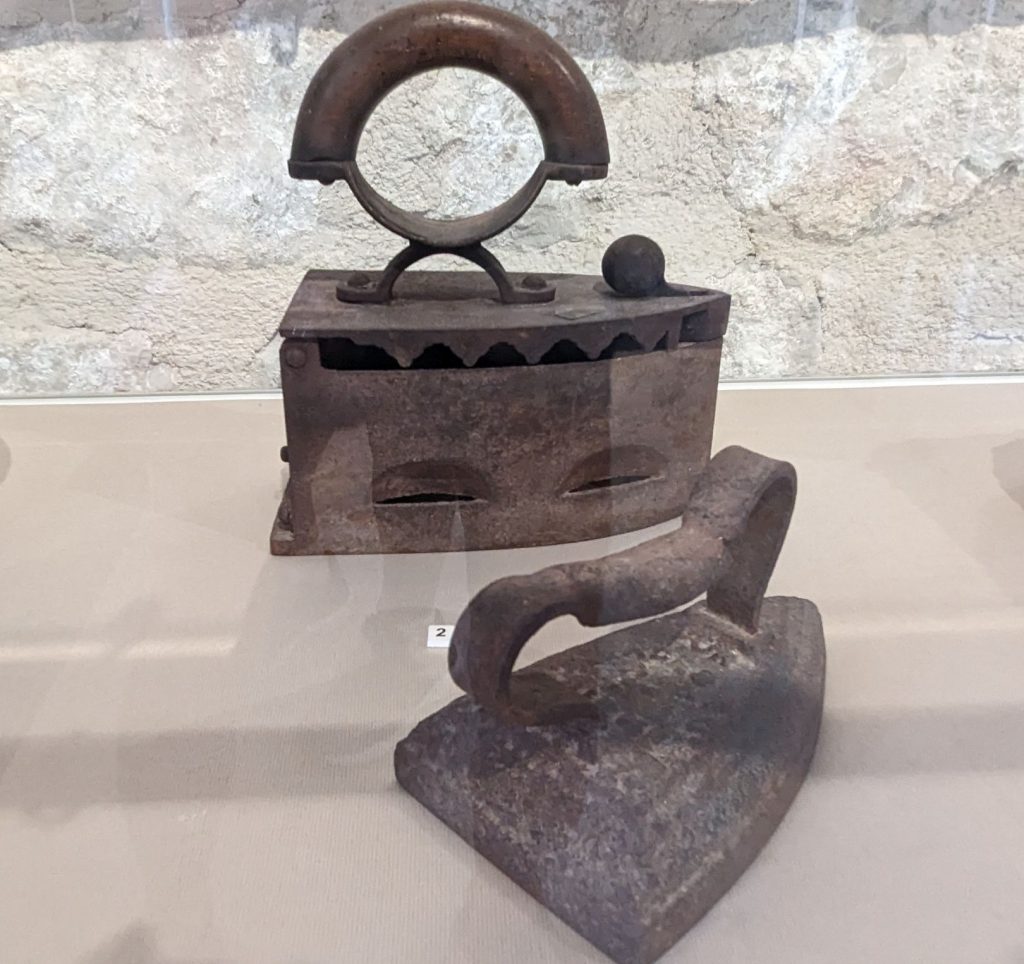
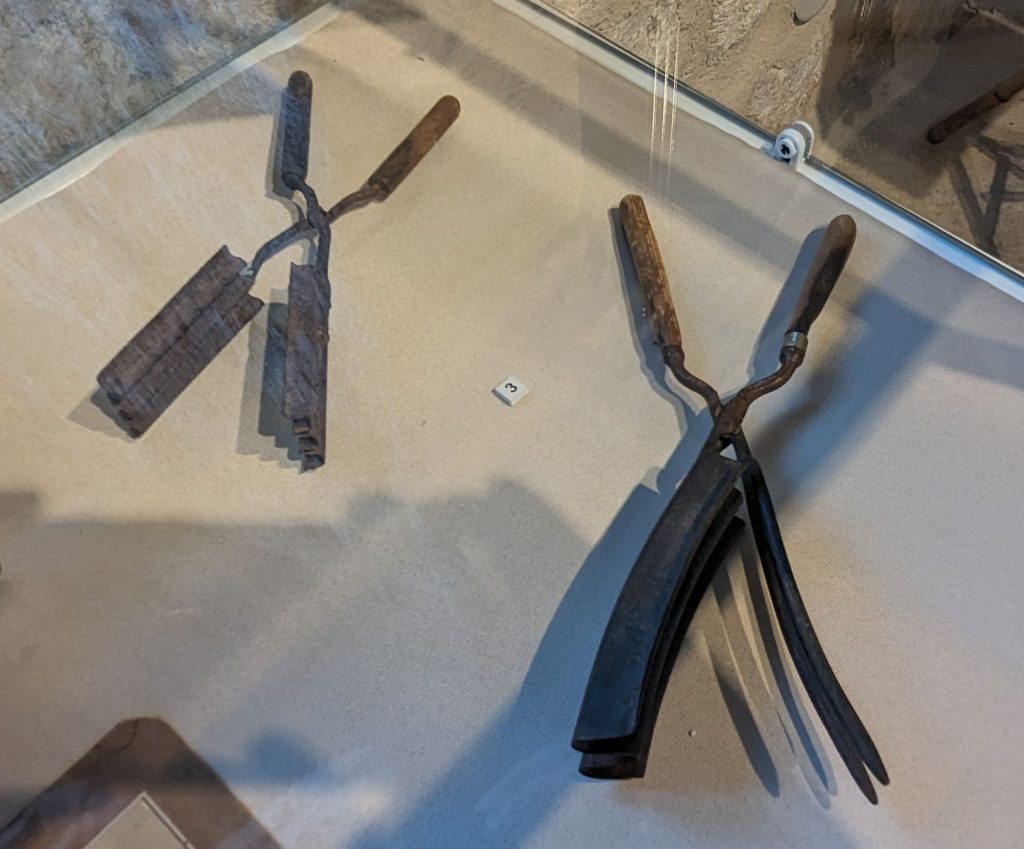
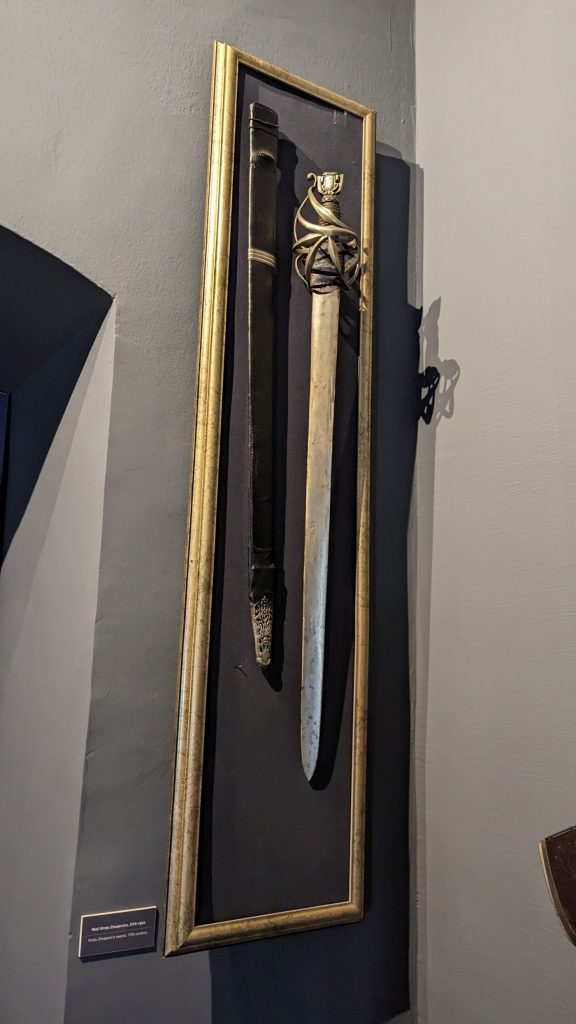
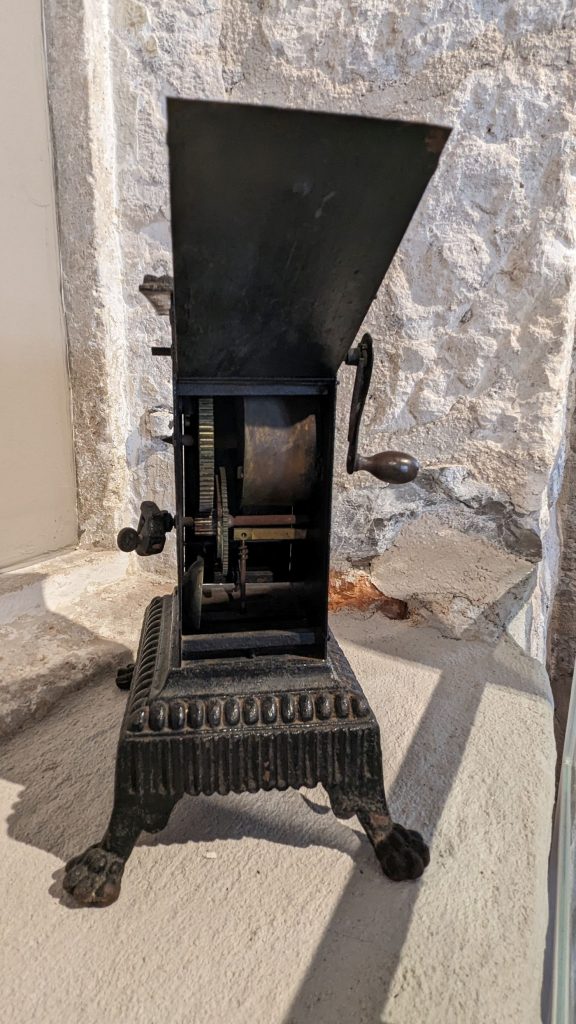
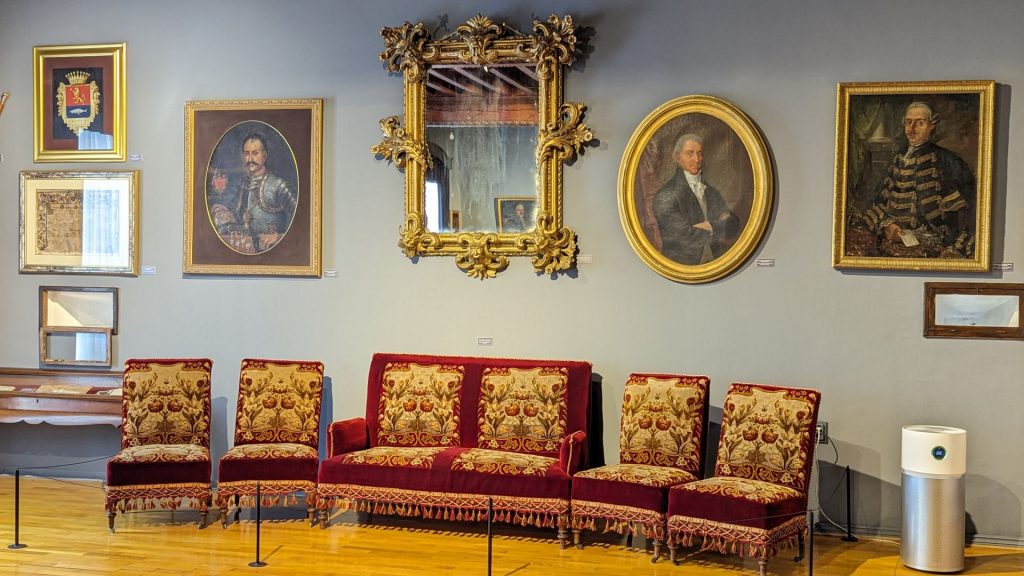
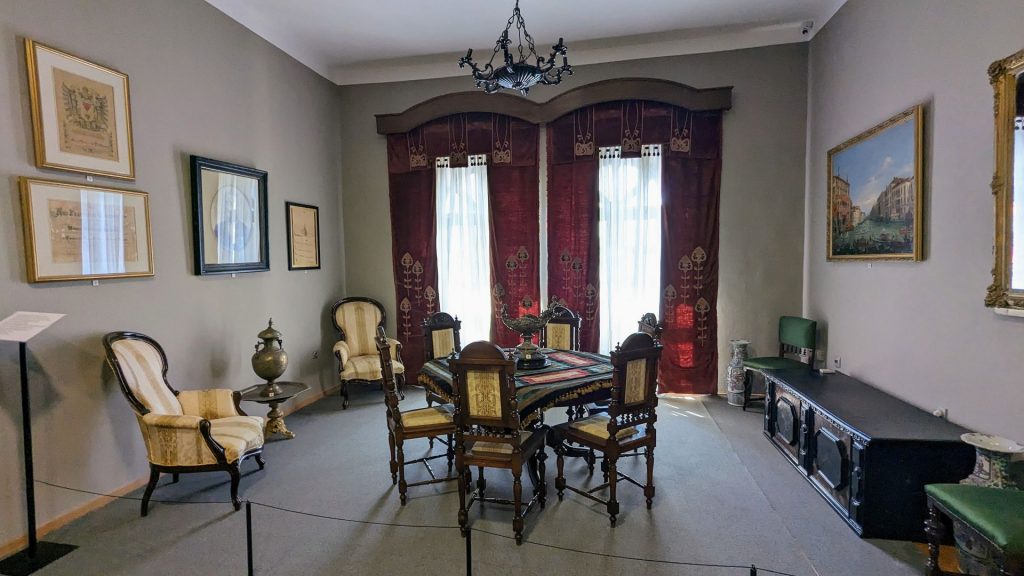
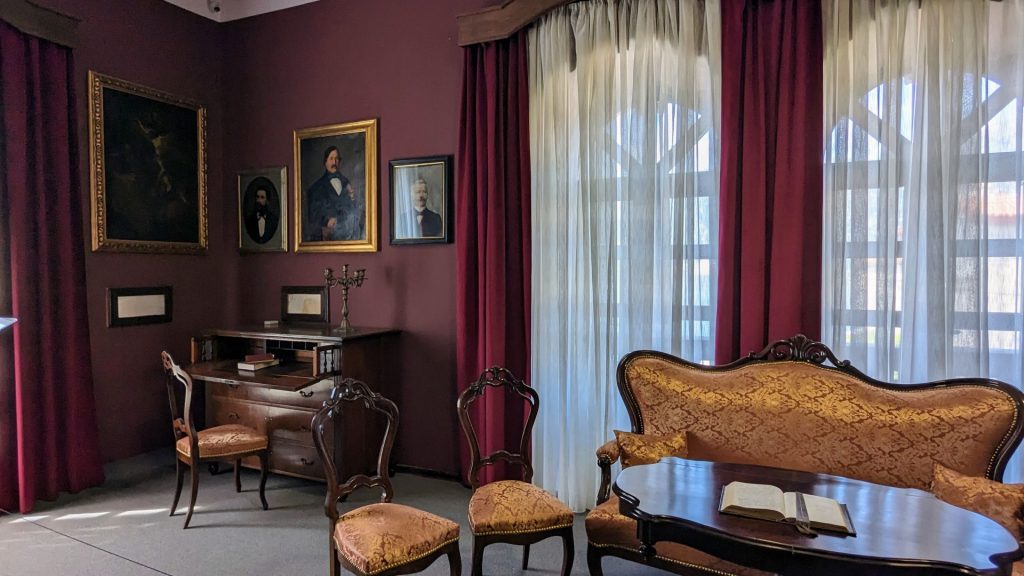
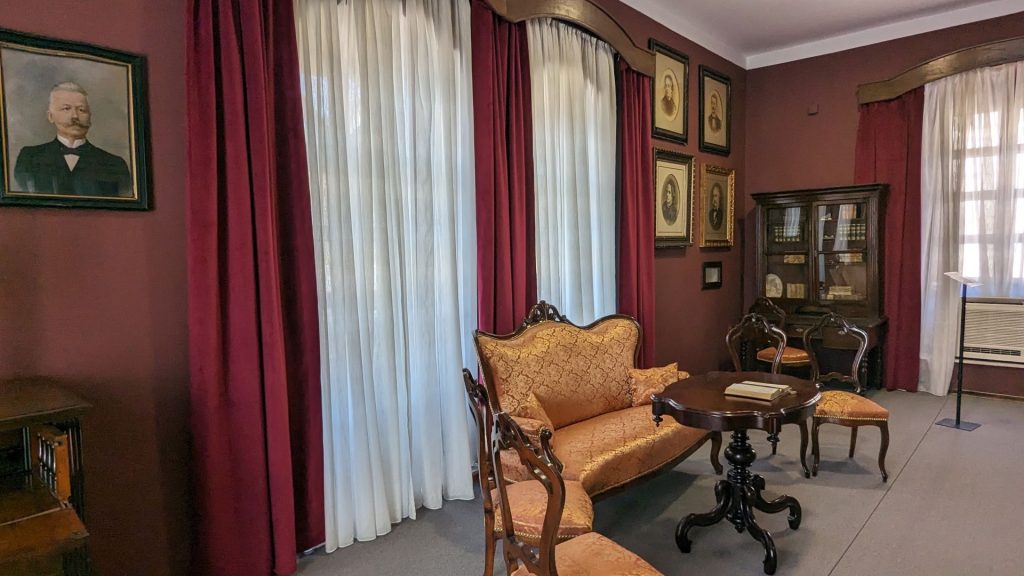
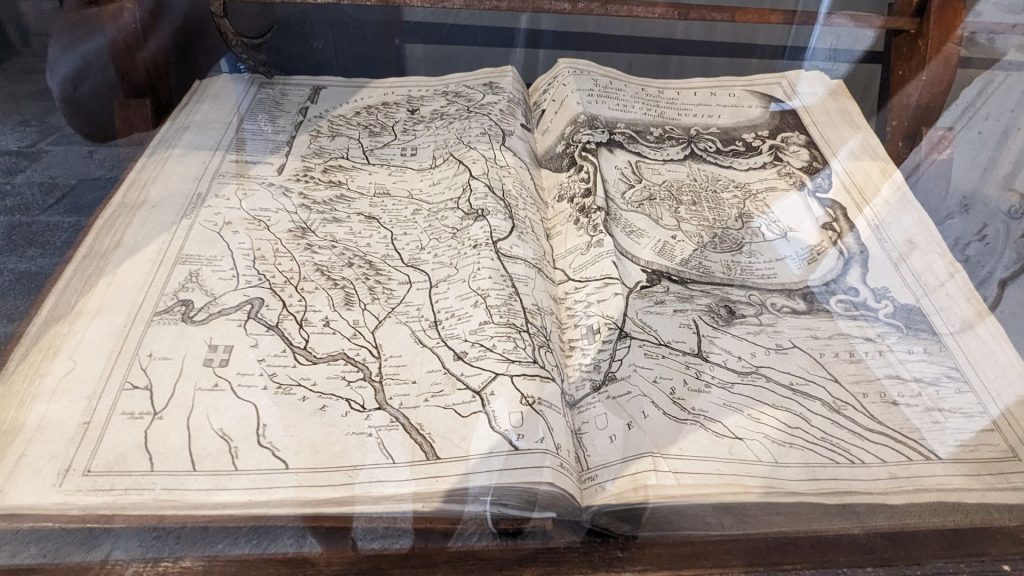
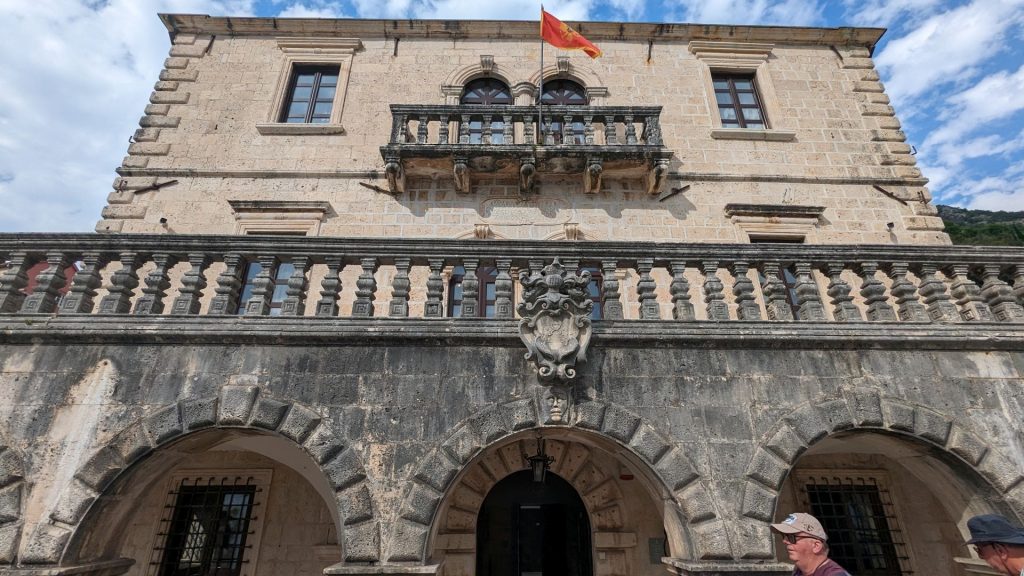
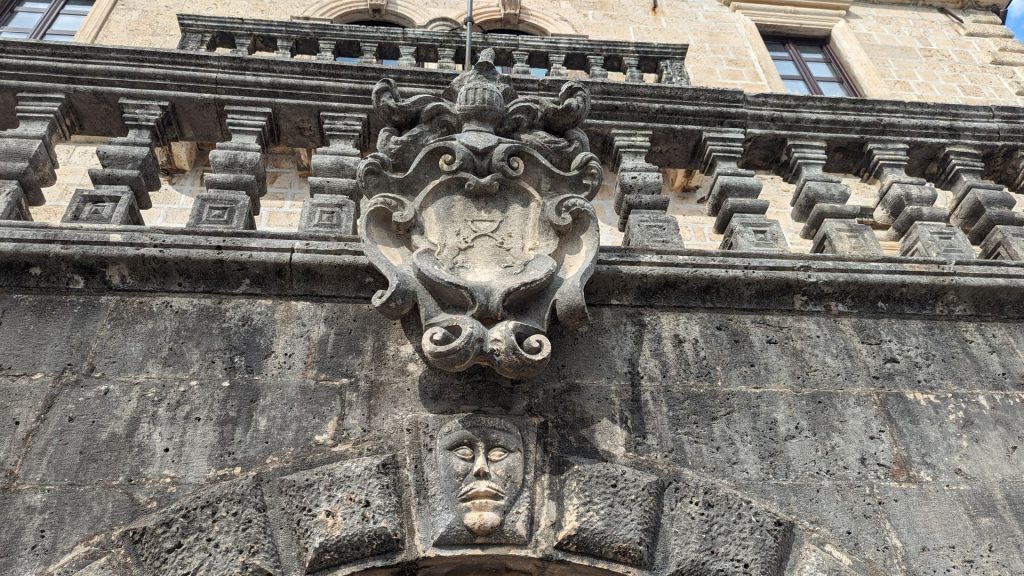
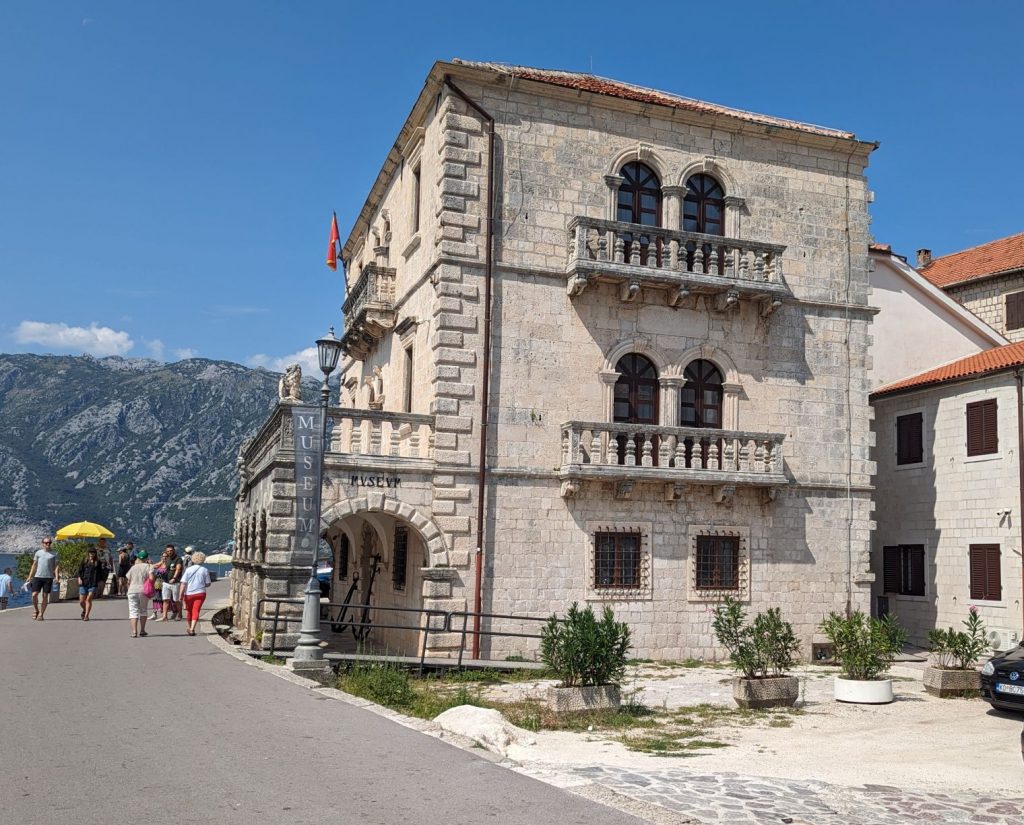
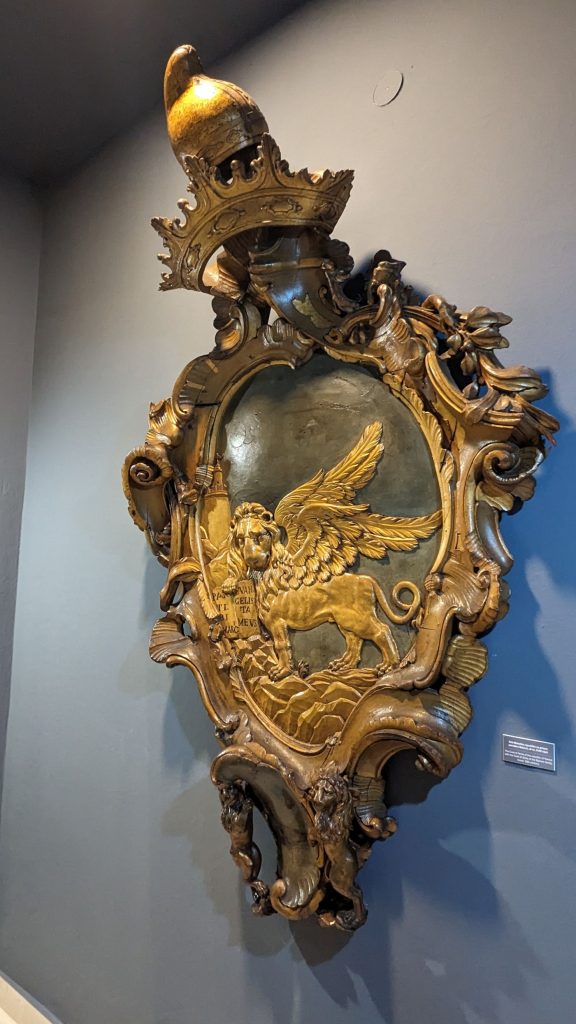
And now, it was time to go to church! I visited St. Nicholas’s Church. It is from the 17th century. When you enter the church, you see a very small area with a main altar and two other altars. To see more of the church requires a payment of two euros. I’d read that it was worth it, so I paid for it. There was actually a LOT more to see in the other rooms.
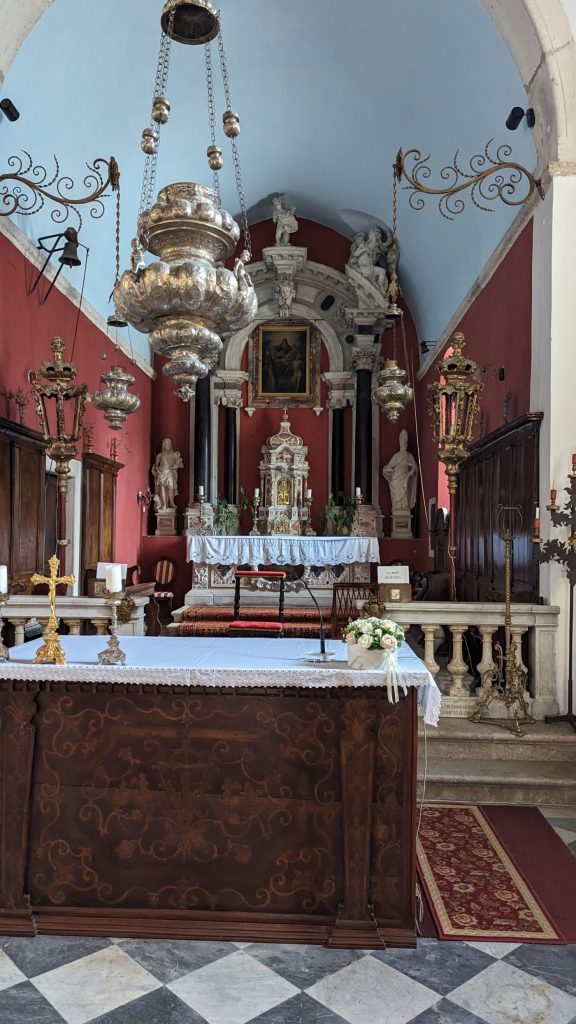
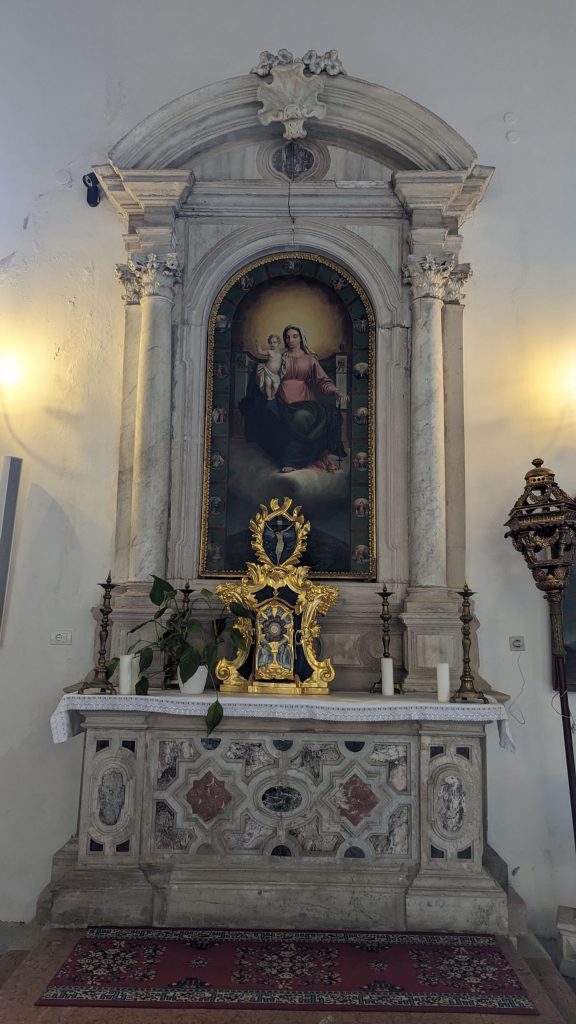
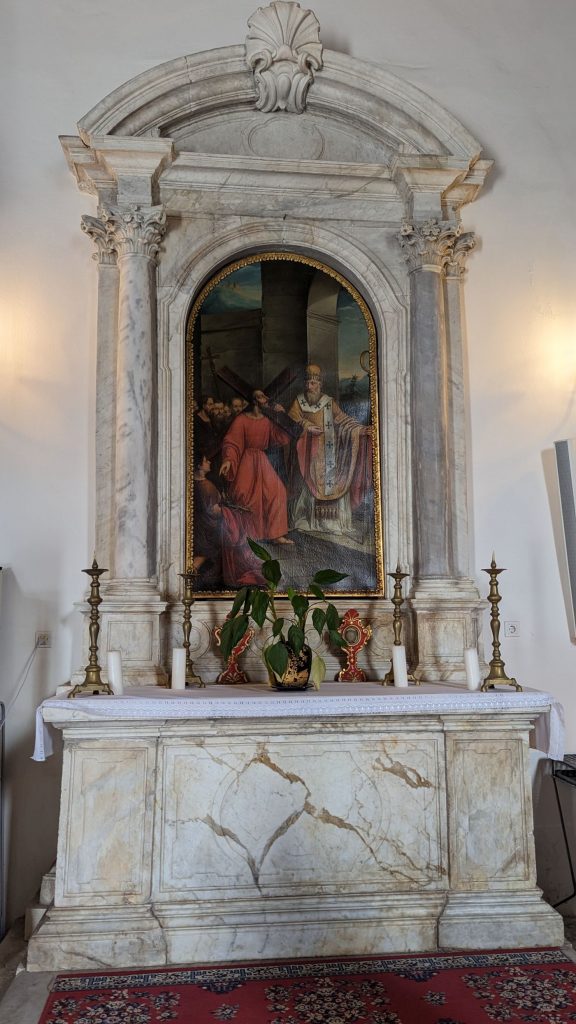
The first thing you see when entering the “back area” is this huge altar and the high ceilings.
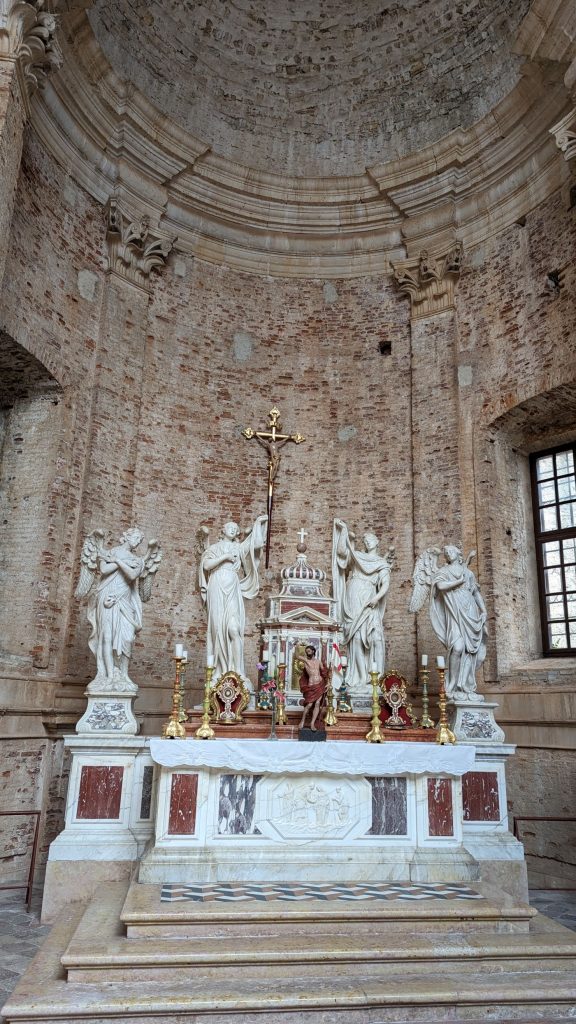
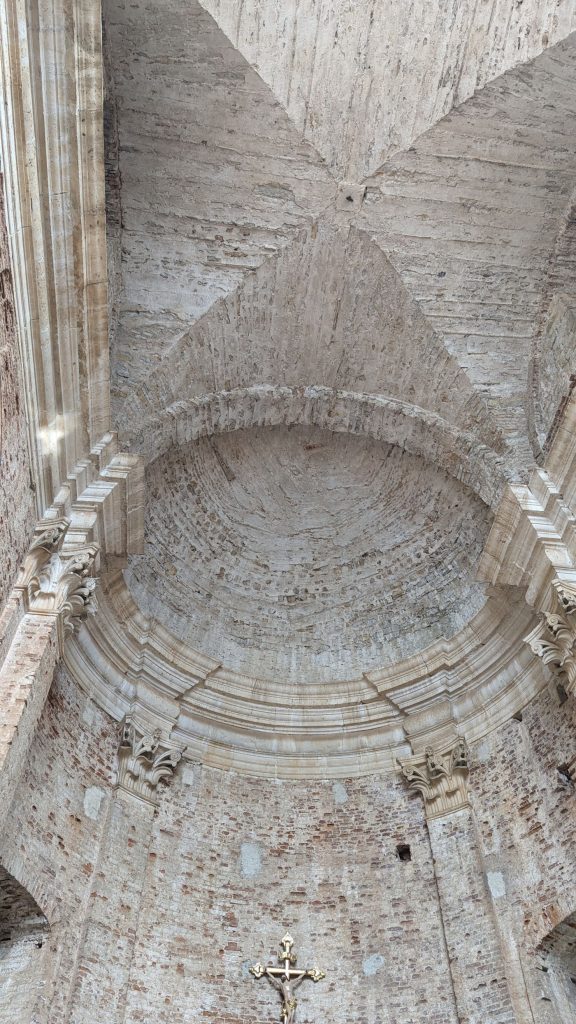
There are also numerous gold and silver items and various examples of vestments.
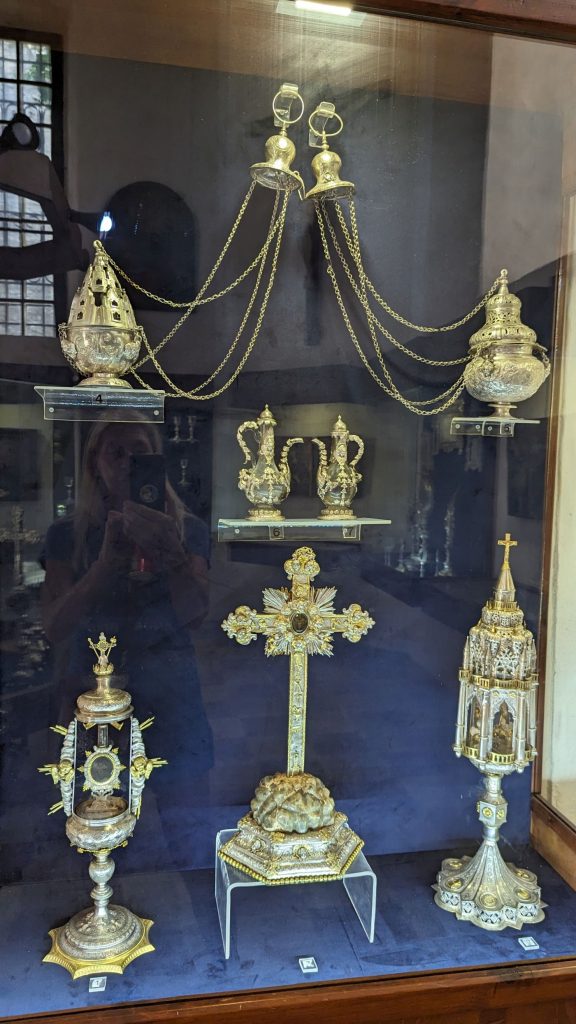
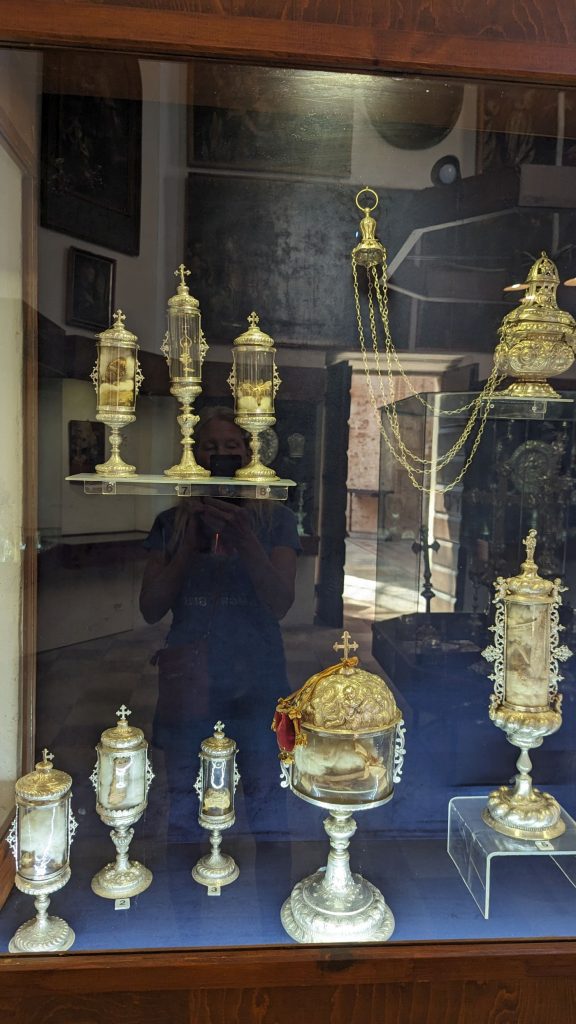
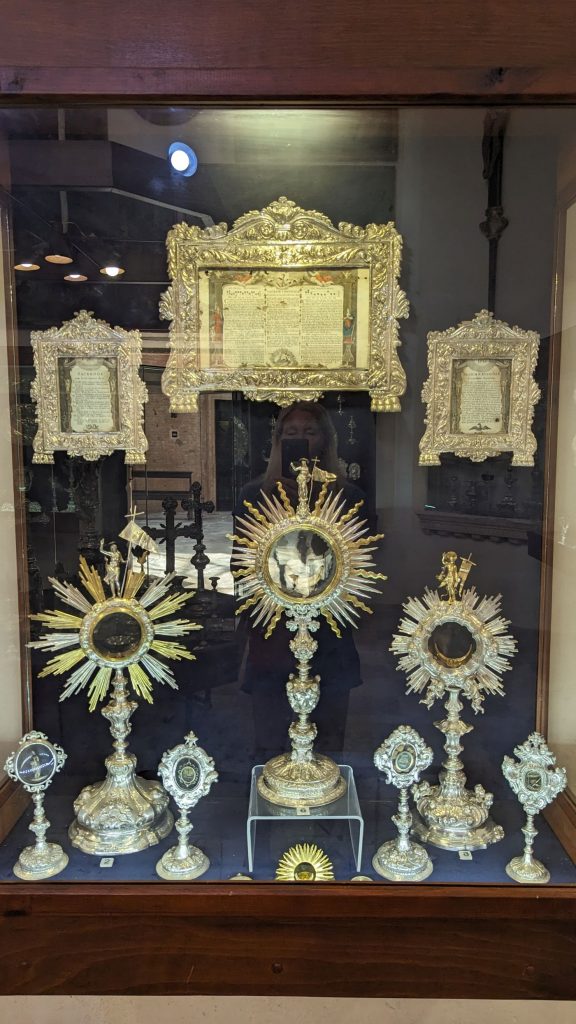
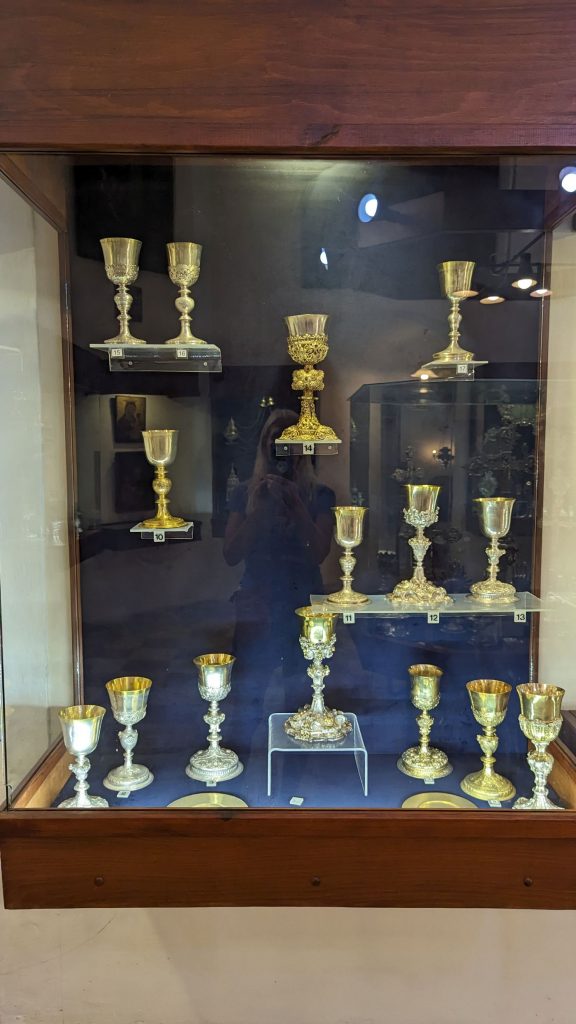
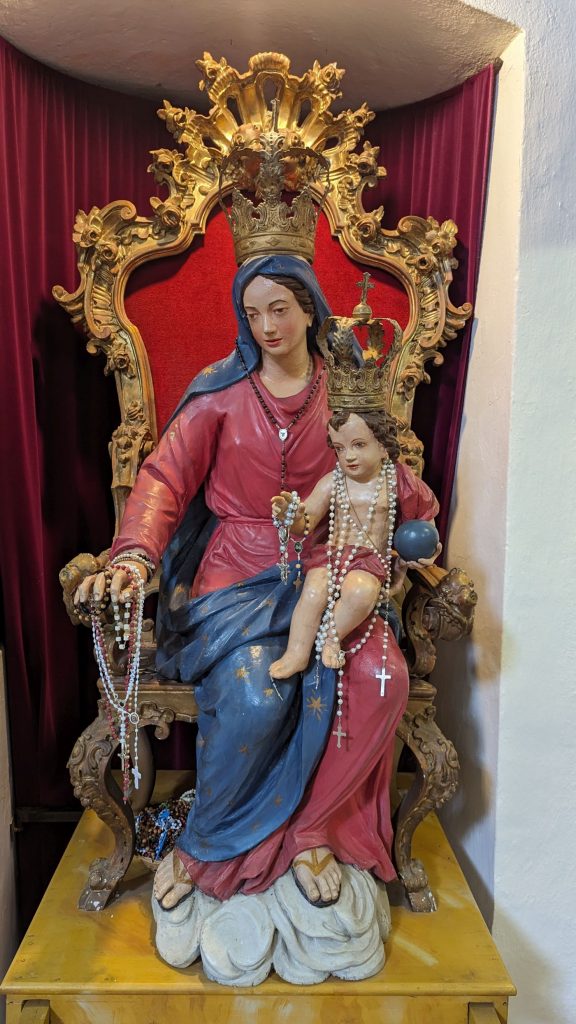
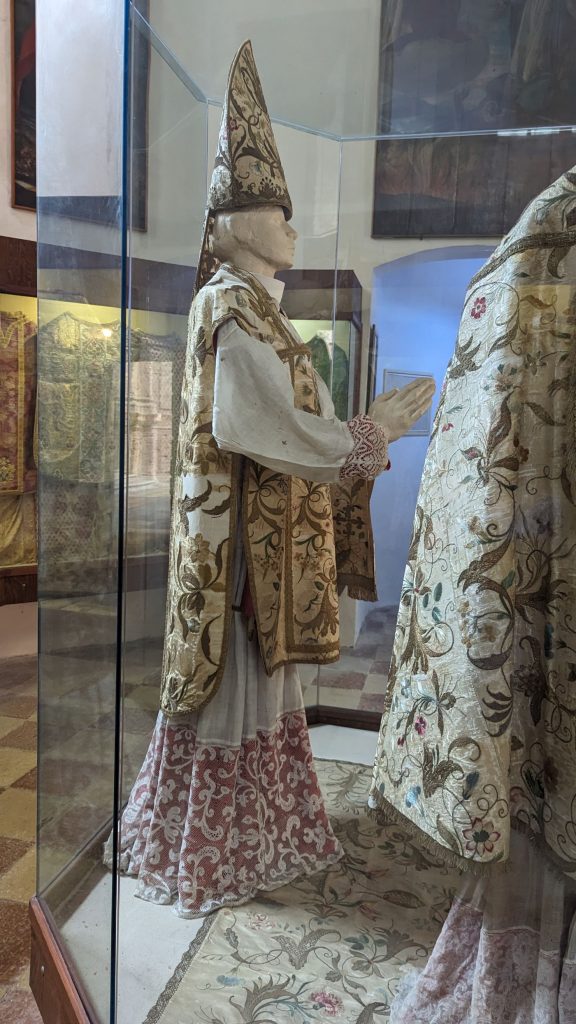
That was interesting, but I was most looking forward to climbing the bell tower to see the views from up top. This cost another euro.
The steps leading to the top are. . . interesting. They seem to magically hold onto the walls and/or. . . float.
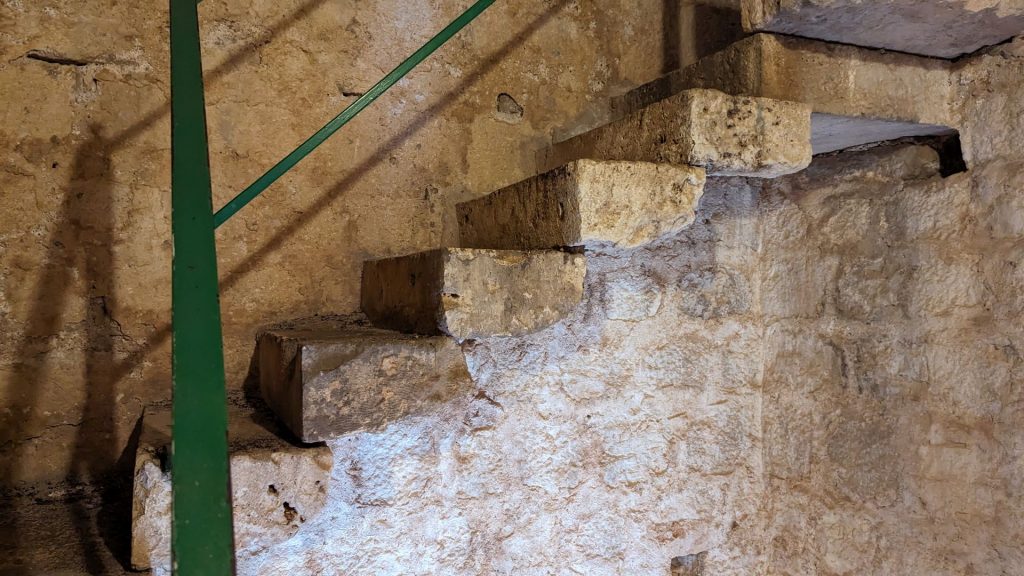
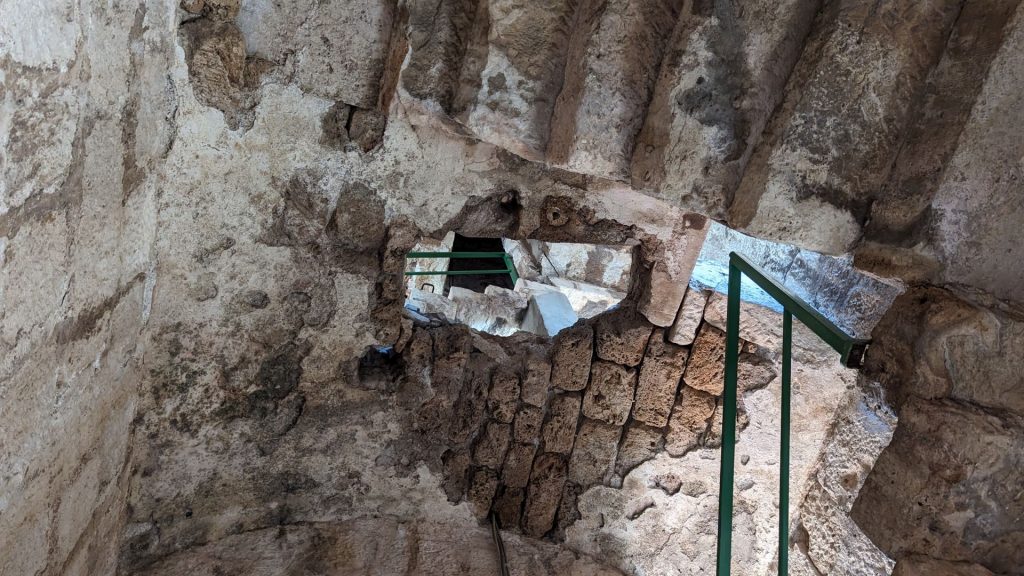
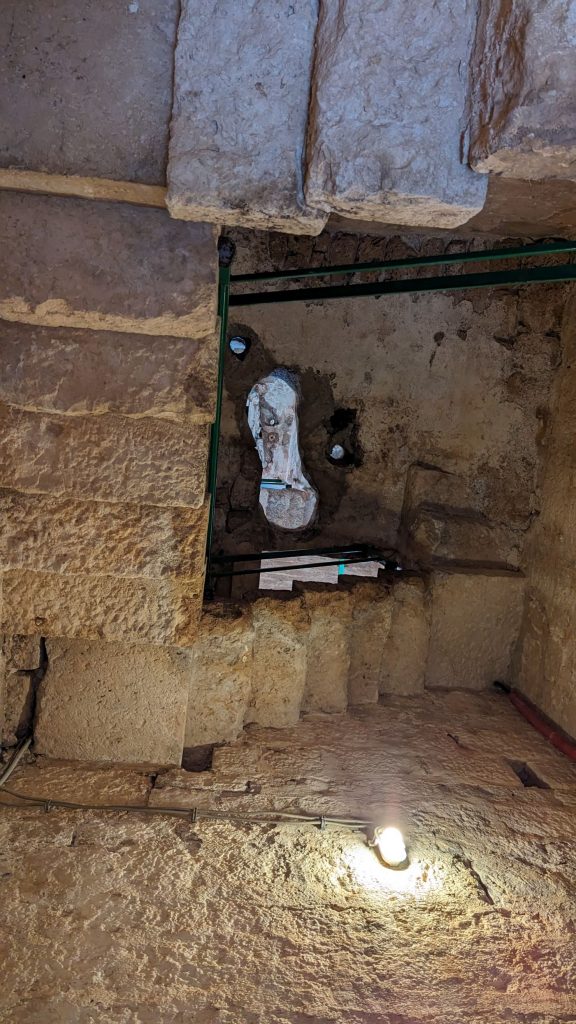
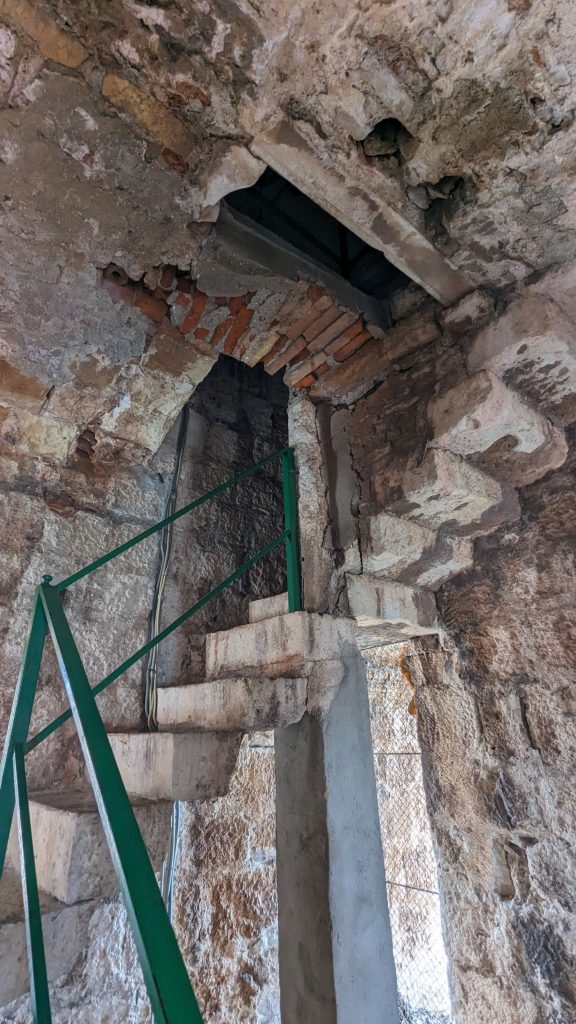
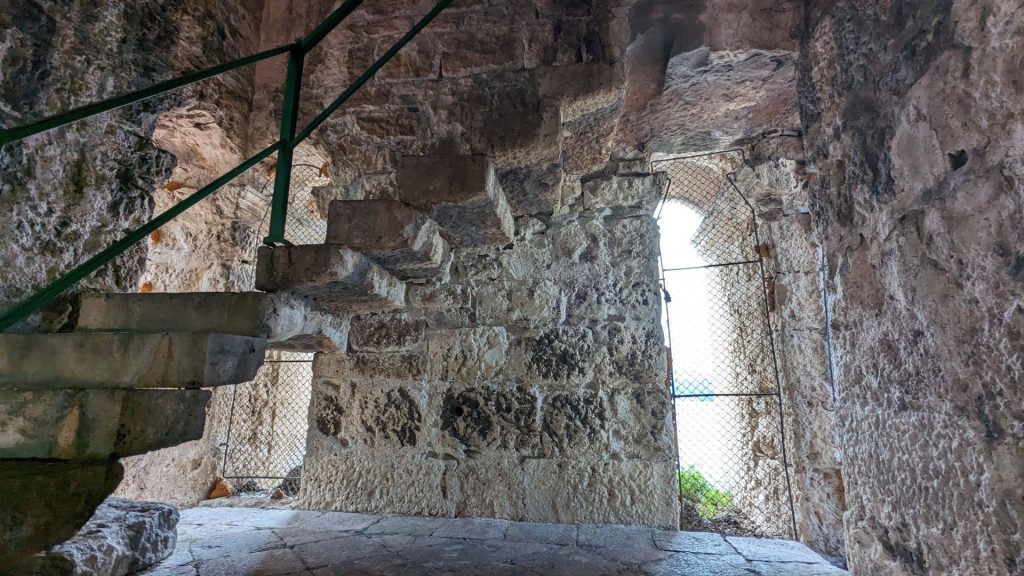
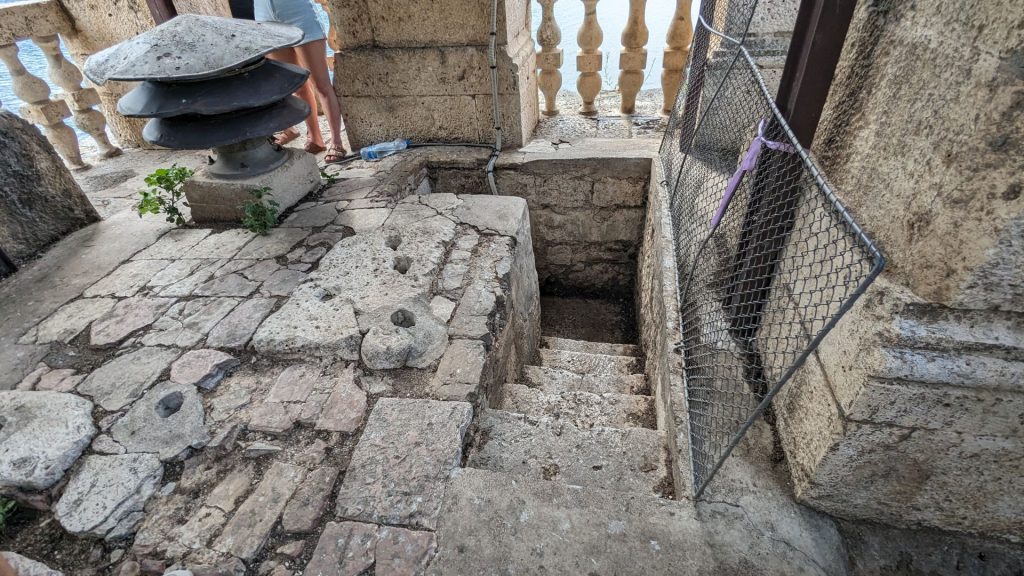
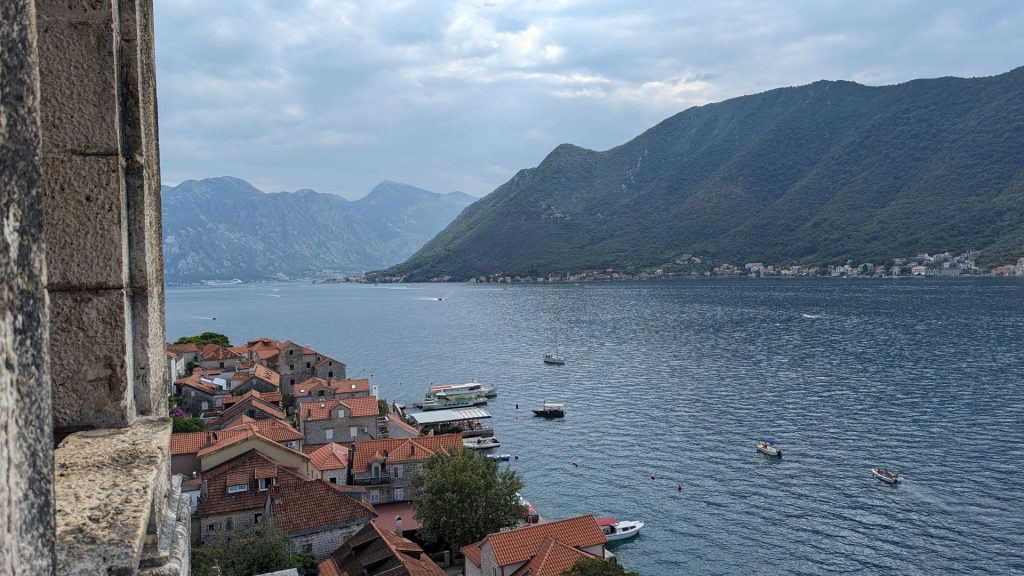
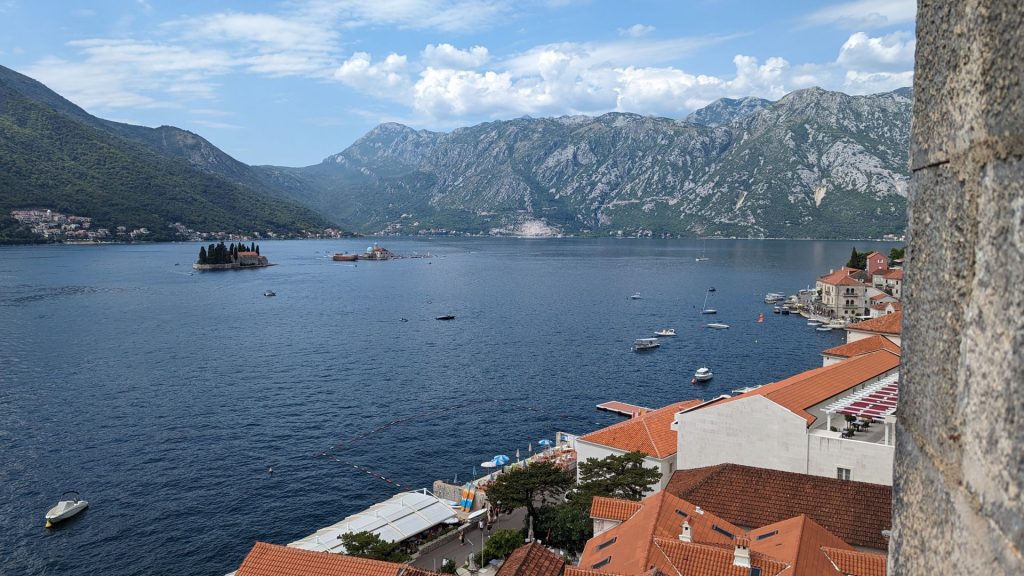
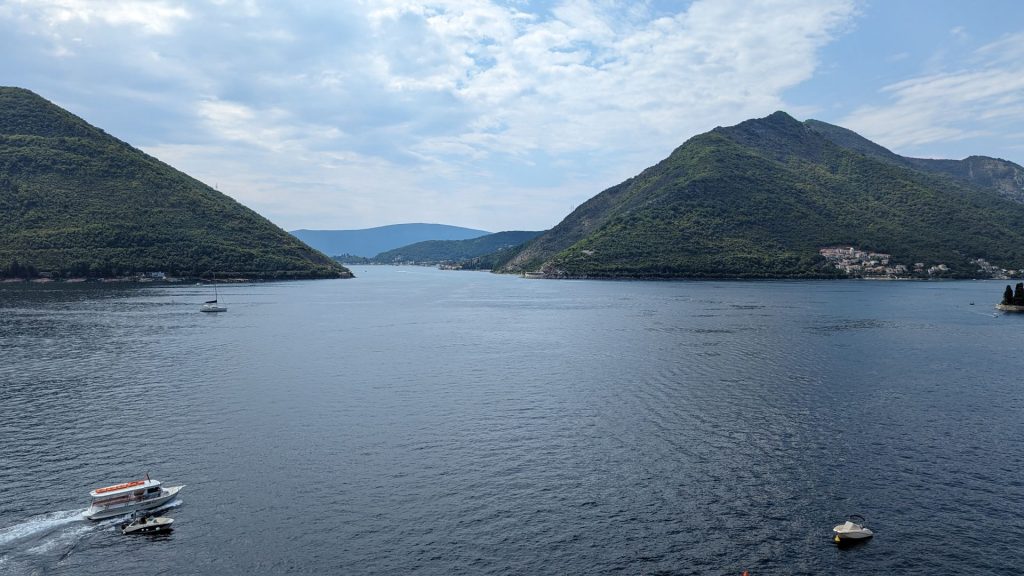
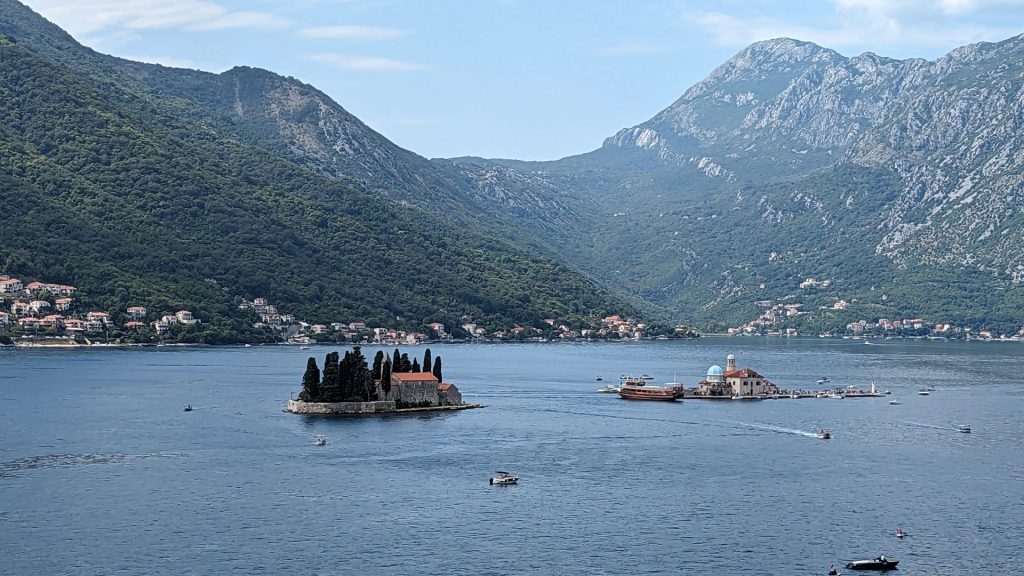
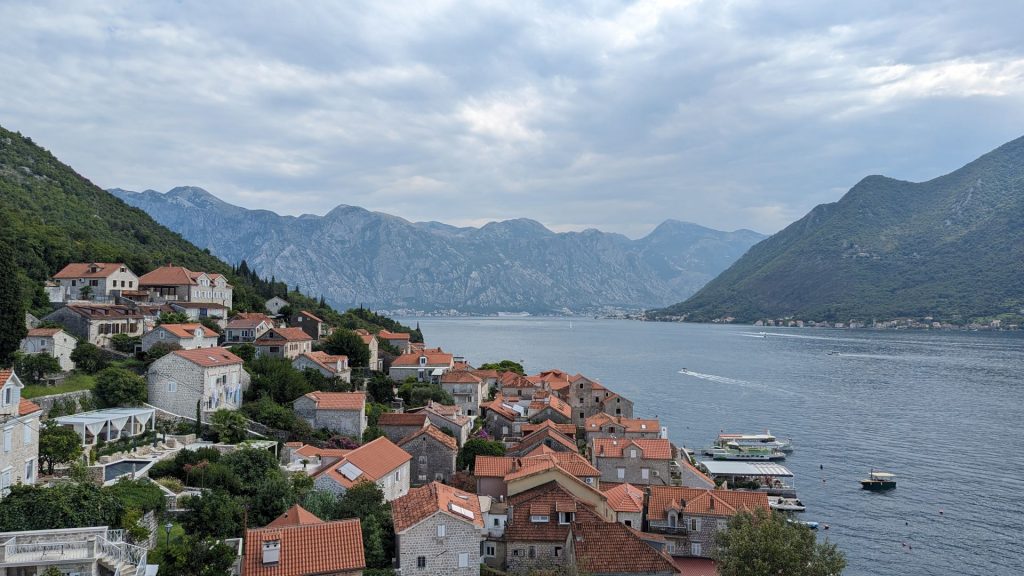
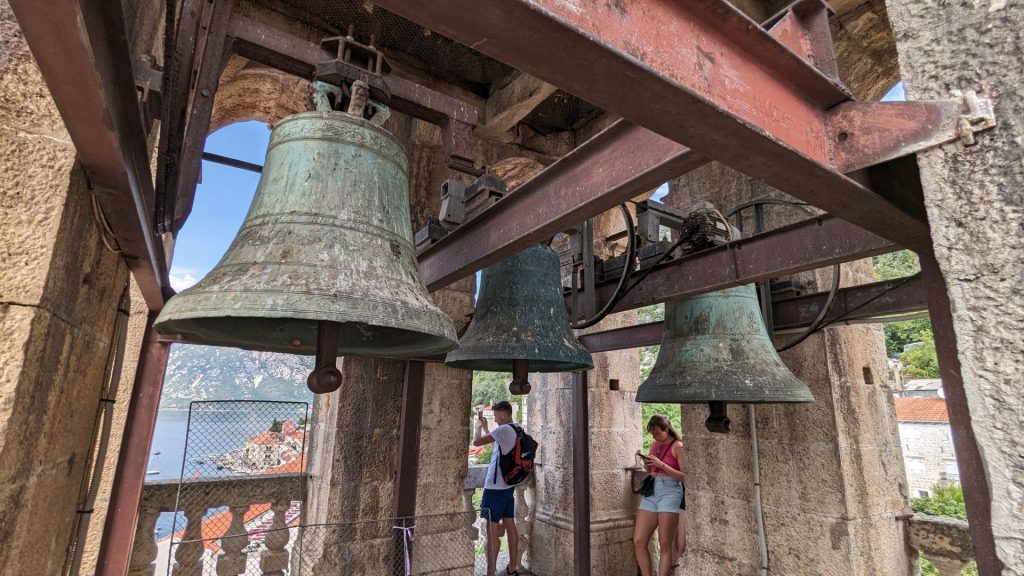
It was time for lunch. While we were eating, we decided to take a water taxi to Our Lady of the Rocks and head back to Seahike. No more palaces.
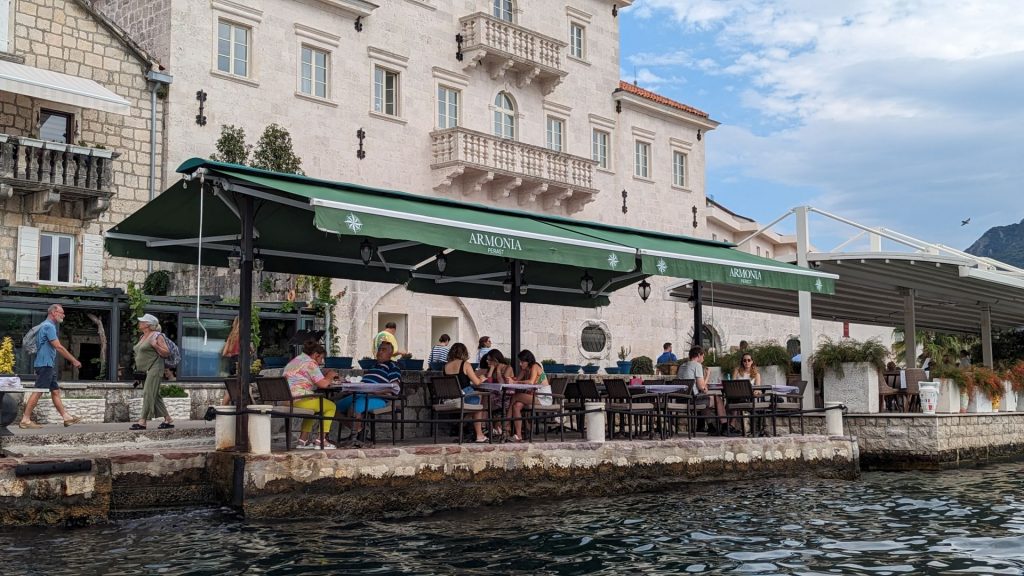
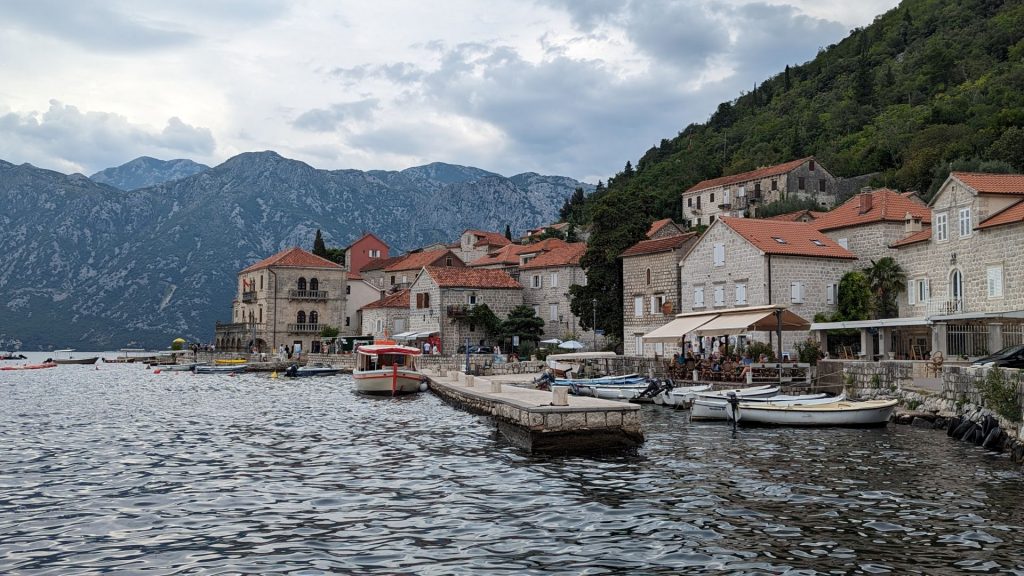
Our Lady of the Rocks as explained by Wikipedia:
“Our Lady of the Rocks is one of the two islets off the coast of Perast in the Bay of Kotor, Montenegro (the other being Sveti Đorđe island). It is an artificial island created by a bulwark of rocks and by sinking old and seized ships loaded with rocks. The Catholic Church of Our Lady of the Rocks (Montenegrin: Gospa od Škrpjela) is the largest building on the islet, and has a museum attached to it. There is also a small gift shop close to the church and a navigation light at the western end of the islet.
According to legend, the islet was made over the centuries by local seamen who kept an ancient oath after finding the icon of Madonna and Child on the rock in the sea on 22 July 1452. Upon returning from each successful voyage, they laid a rock in the Bay. Over time, the islet gradually emerged from the sea. The custom of throwing rocks into the sea is alive even nowadays. Every year on the sunset of 22 July, an event called fašinada in the local dialect, when local residents take their boats and throw rocks into the sea, widening the surface of the island, takes place.
The church was renovated in 1722. The church contains 68 paintings by Tripo Kokolja, a famous 17th-century baroque artist from Perast. . . There are also paintings by Italian artists, and an icon (circa 1452) of Our Lady of the Rocks, by Lovro Dobričević of Kotor. The church also houses a collection of silver votive tablets and a famous votive tapestry embroidered by Jacinta Kunić-Mijović from Perast. It took her 25 years to finish it while waiting for her darling to return from a long journey, and eventually, she became blind. She used golden and silver fibers but what makes this tapestry so famous is the fact that she also embroidered her own hair in it.”
Picture time. (I am sure I didn’t capture the “most important” items since I wouldn’t have recognized them as such.)
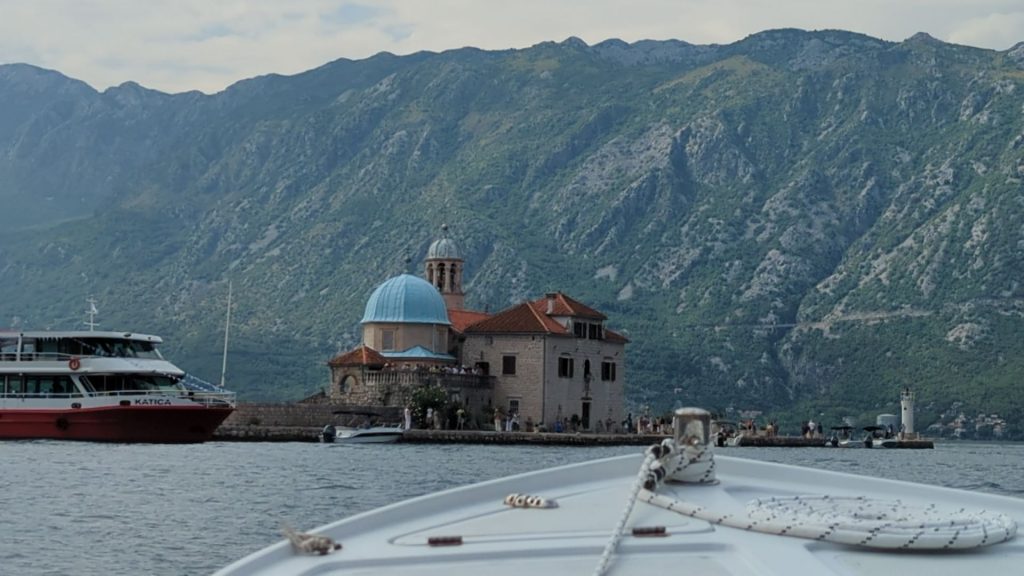
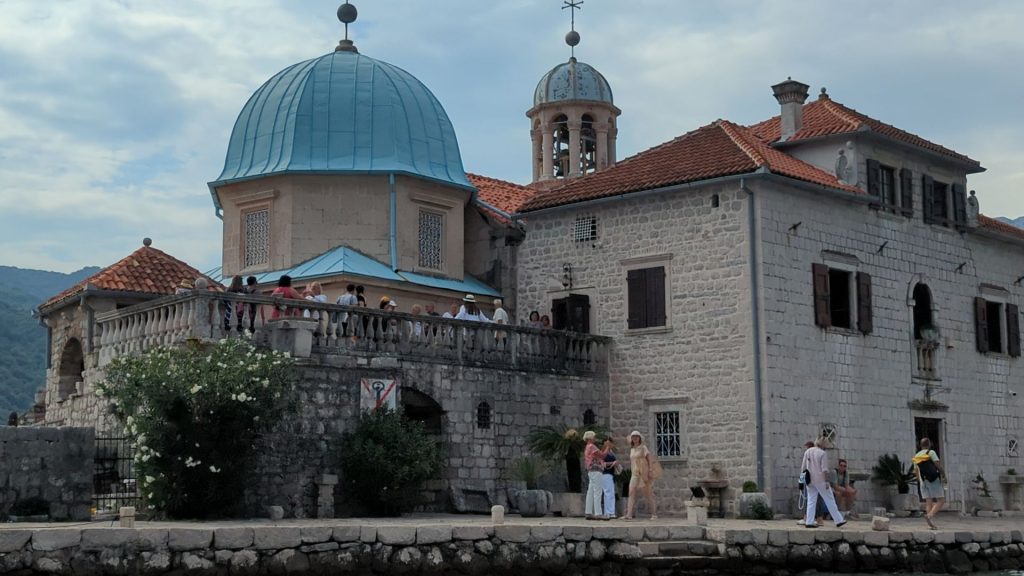
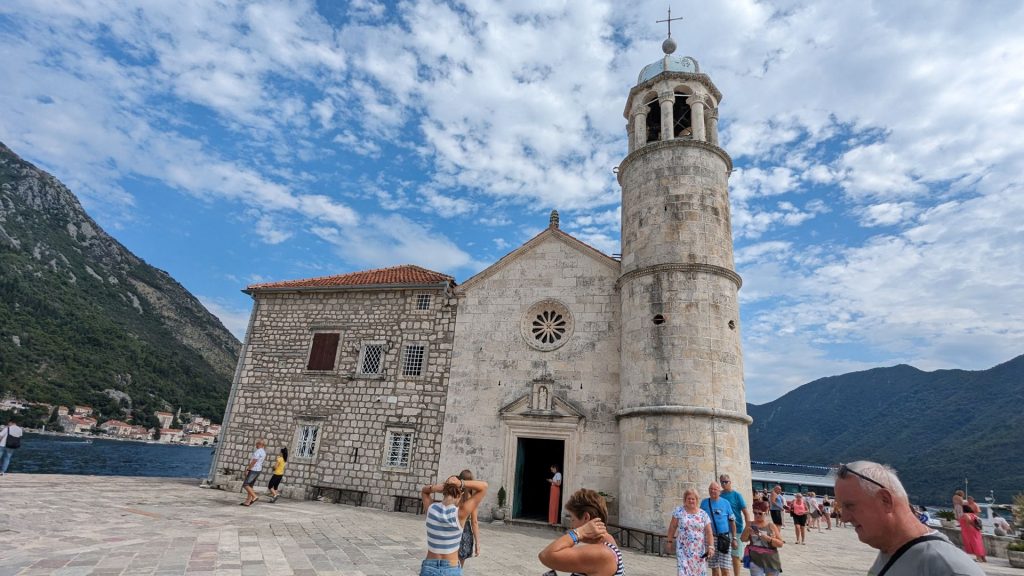
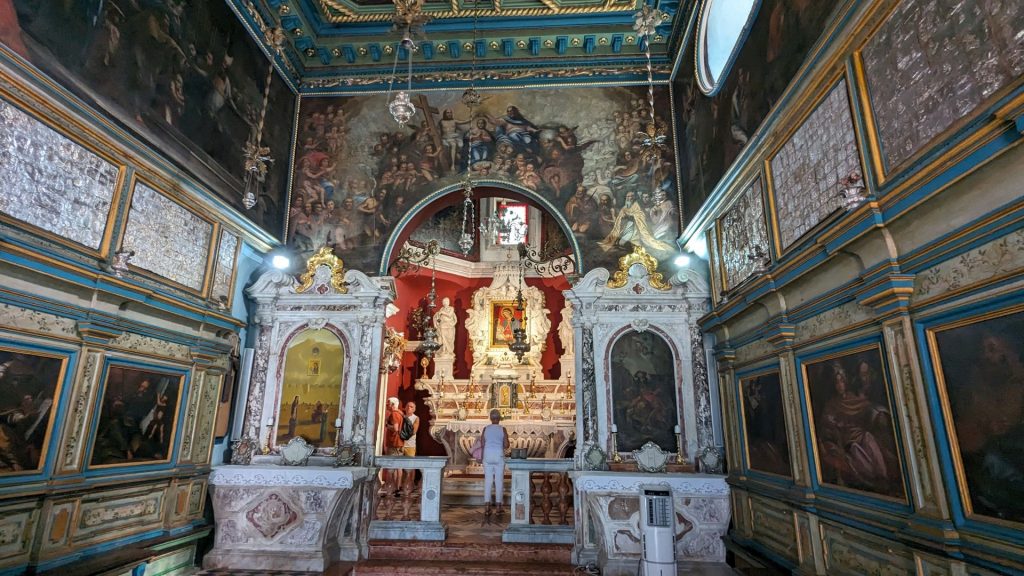
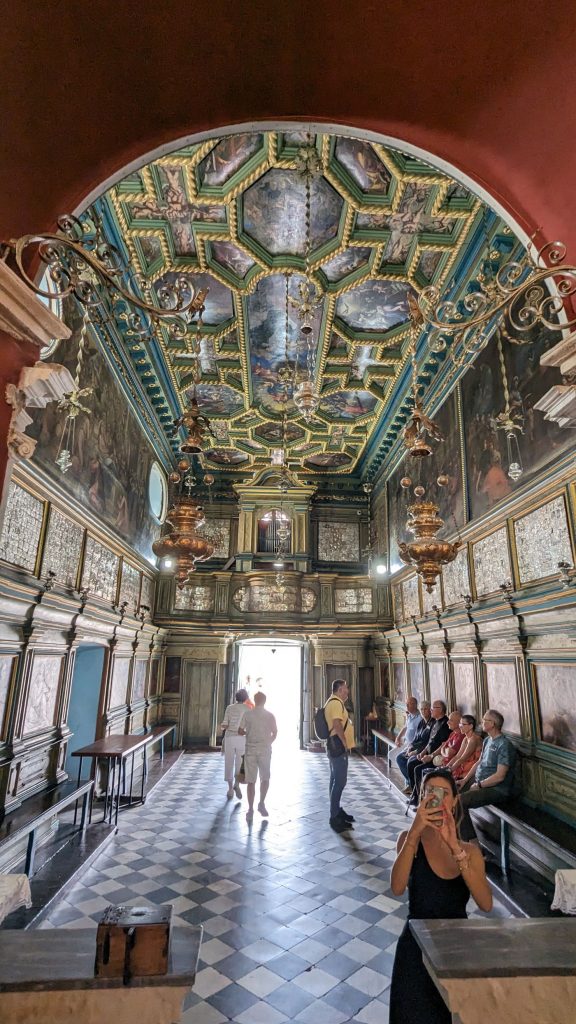
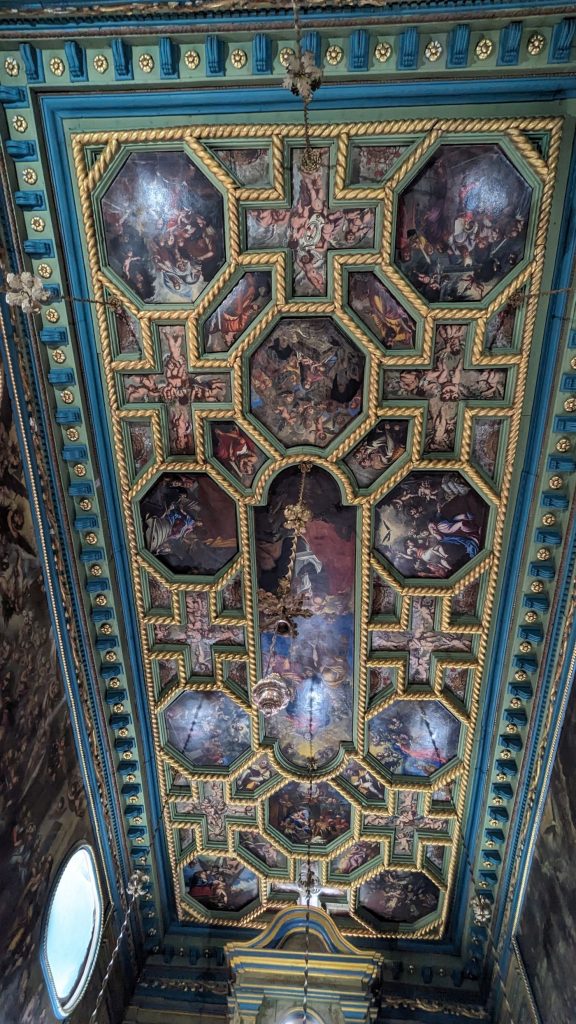
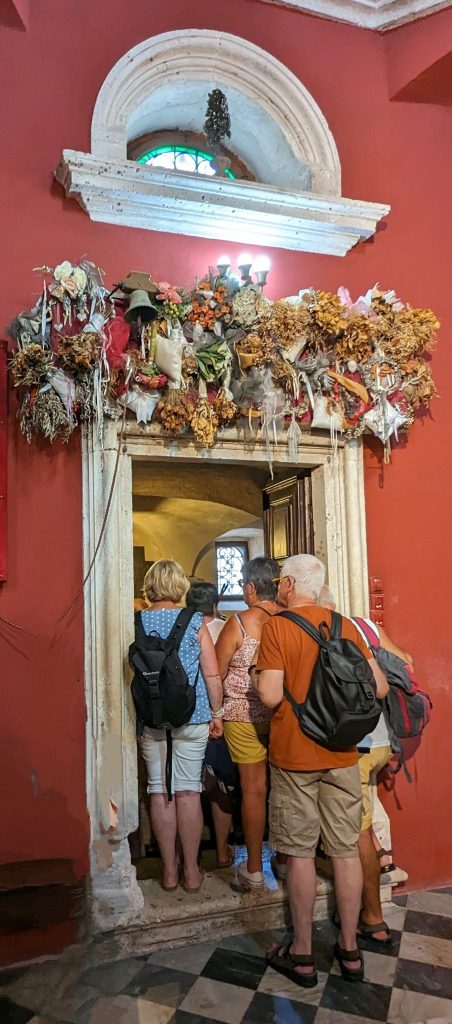
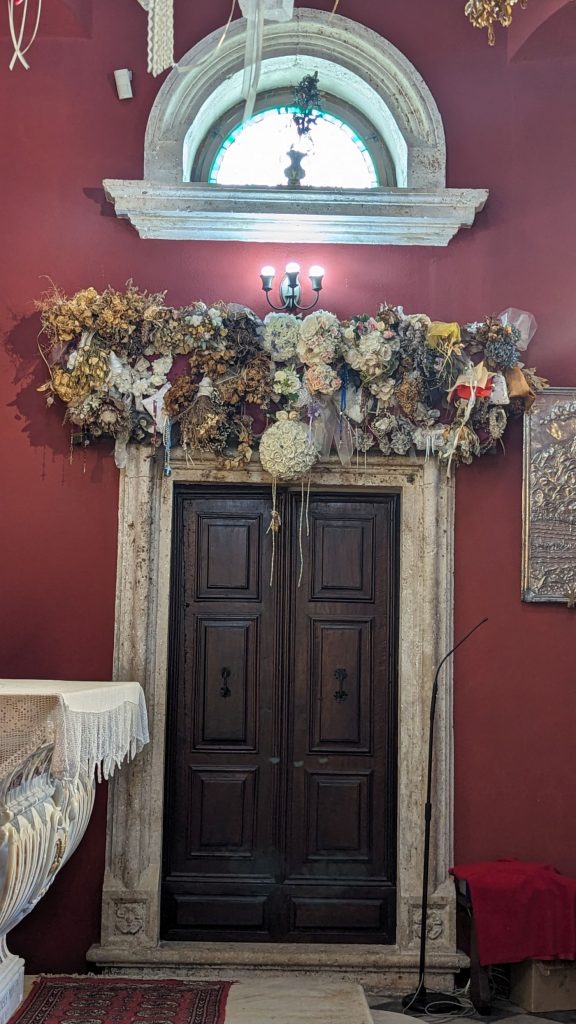
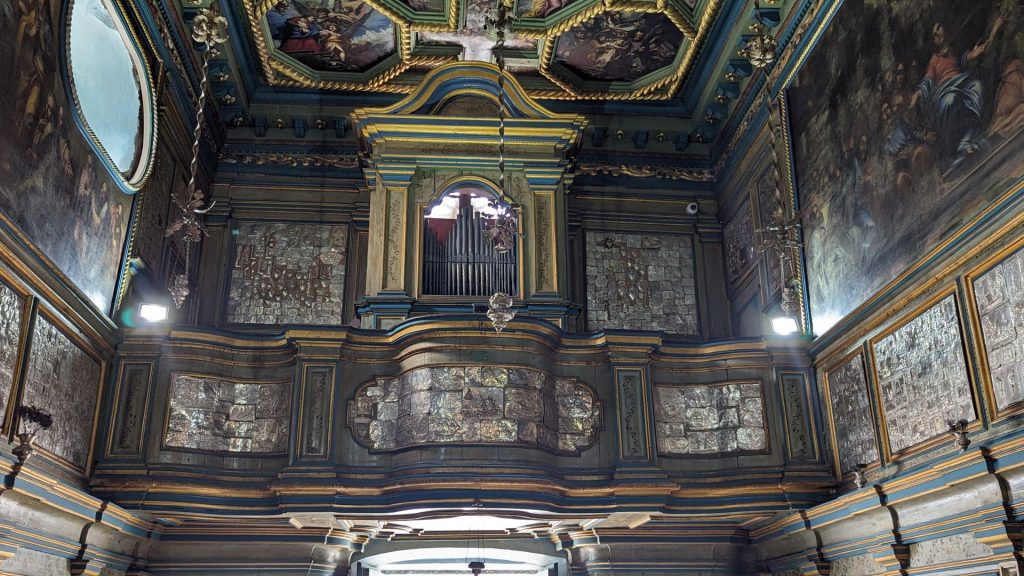
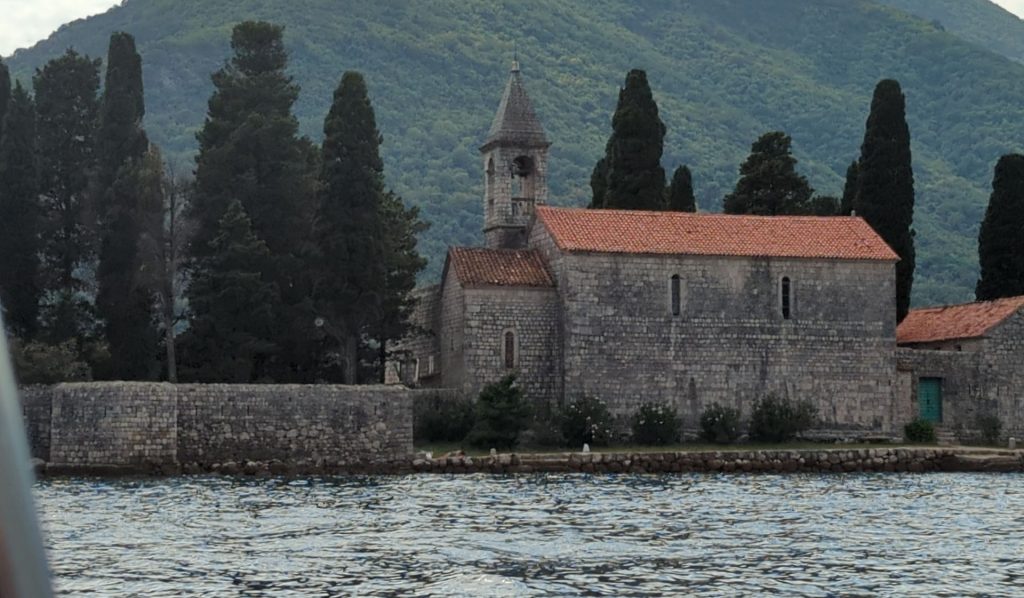
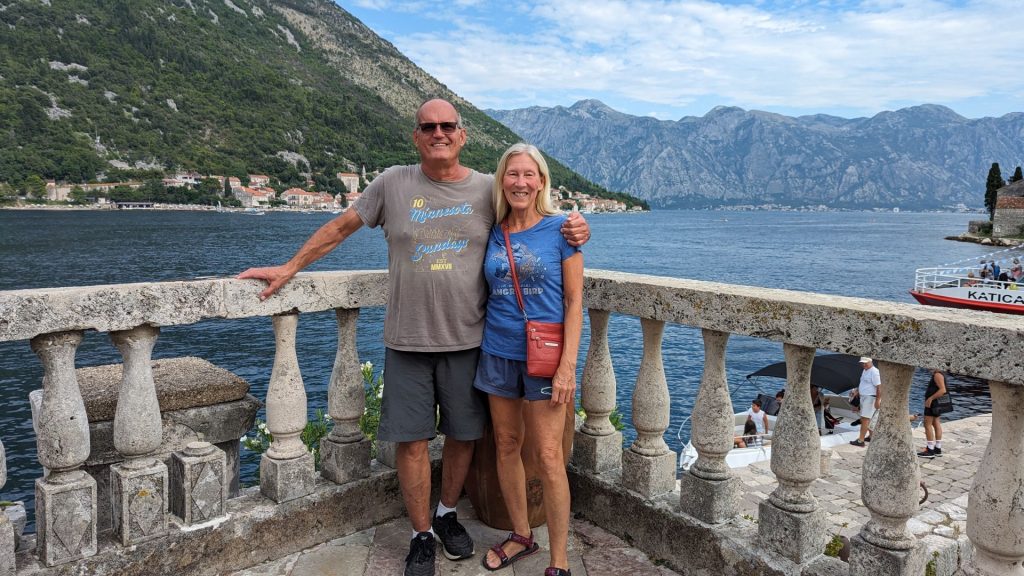
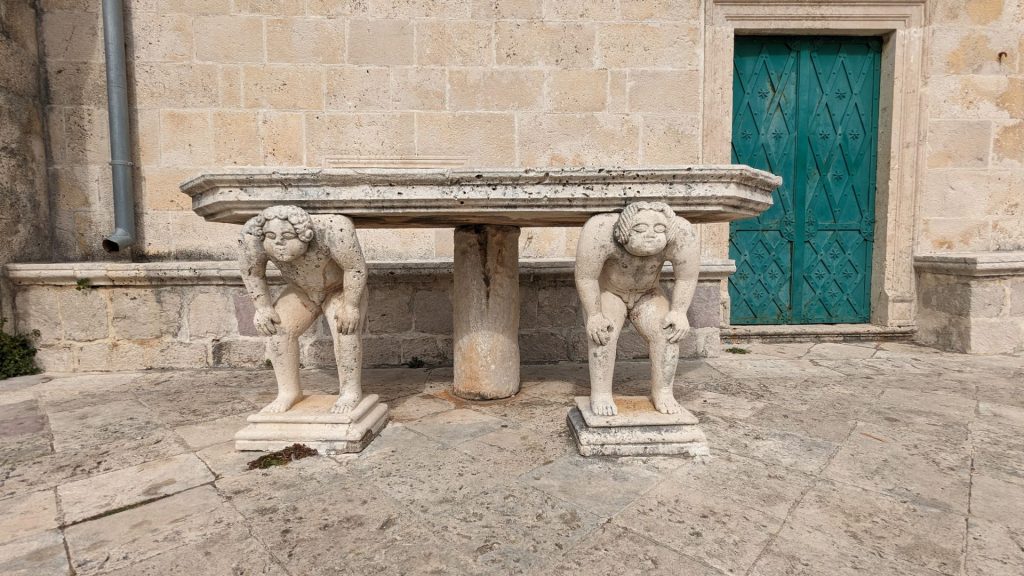
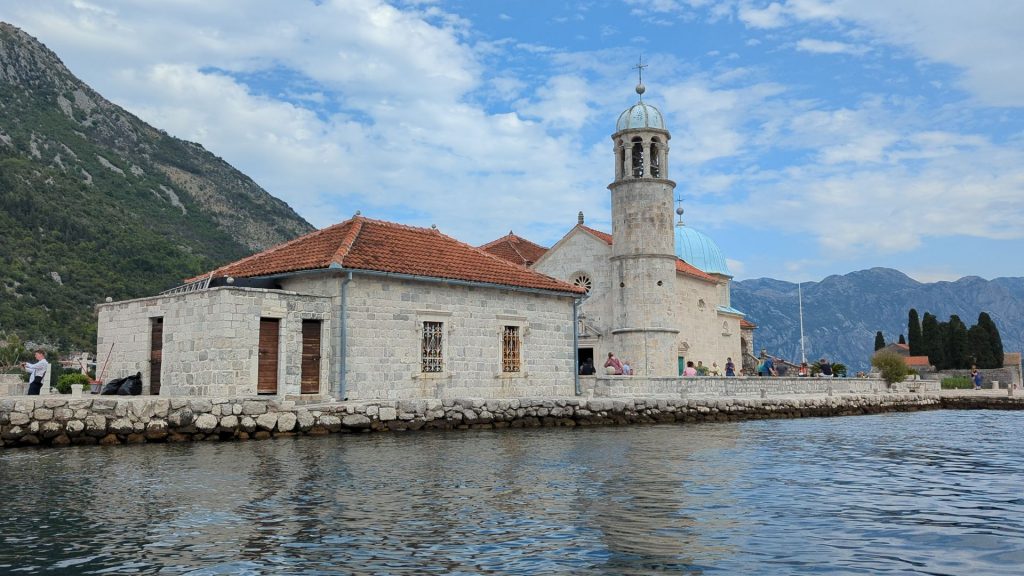
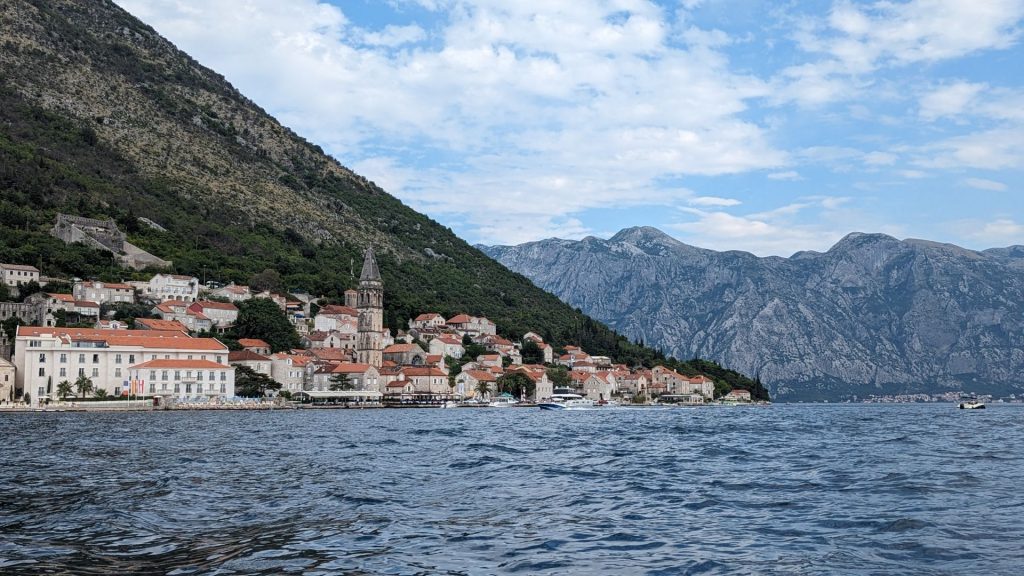
We woke up on the 8th with the intention of going to Tivat. Michael had read that they had several chandleries there and we were still in need of boat supplies. Happily, the wind was perfect for sailing for the first part of the journey. It died, but at least we were able to sail for a bit.
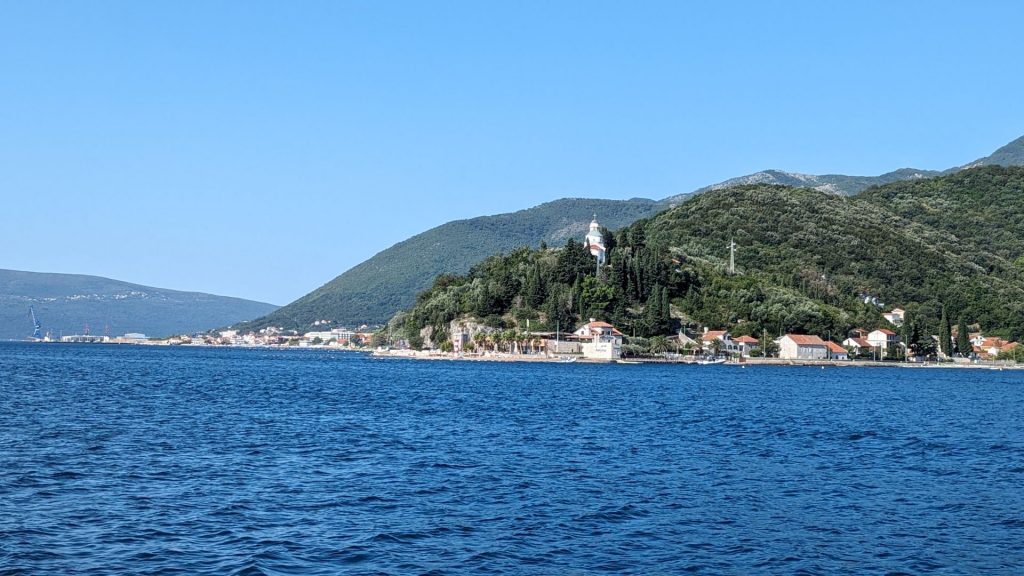
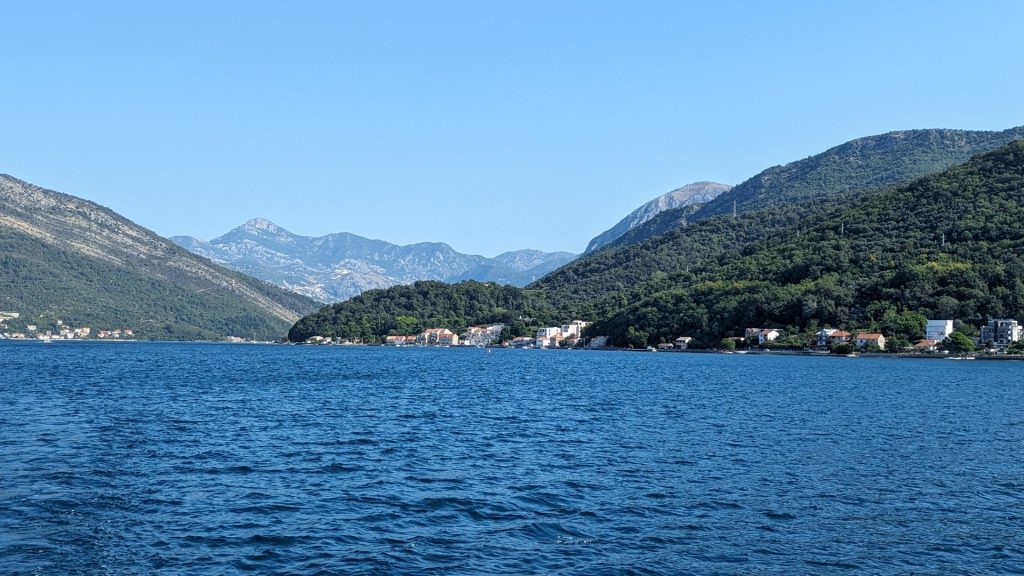
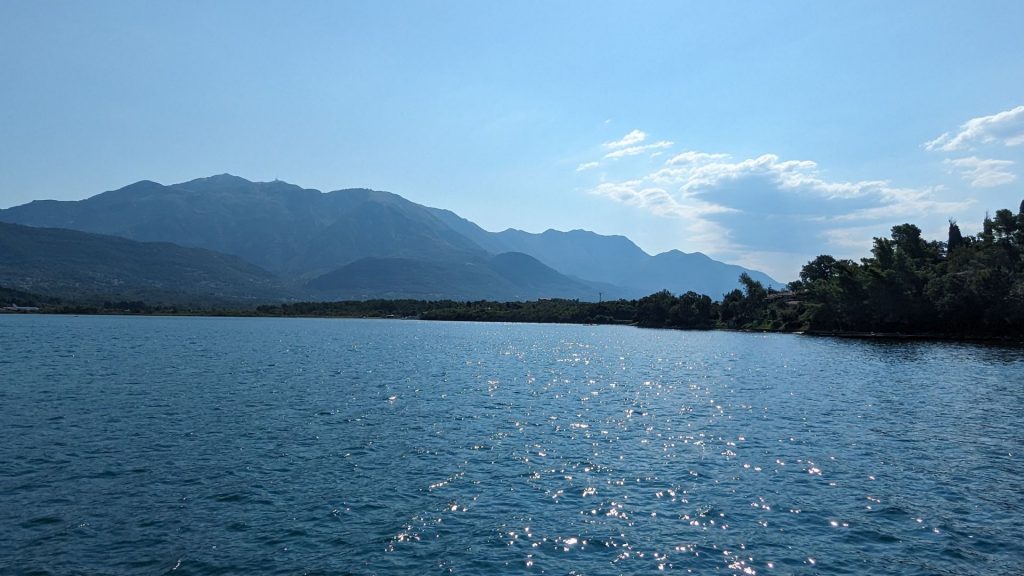
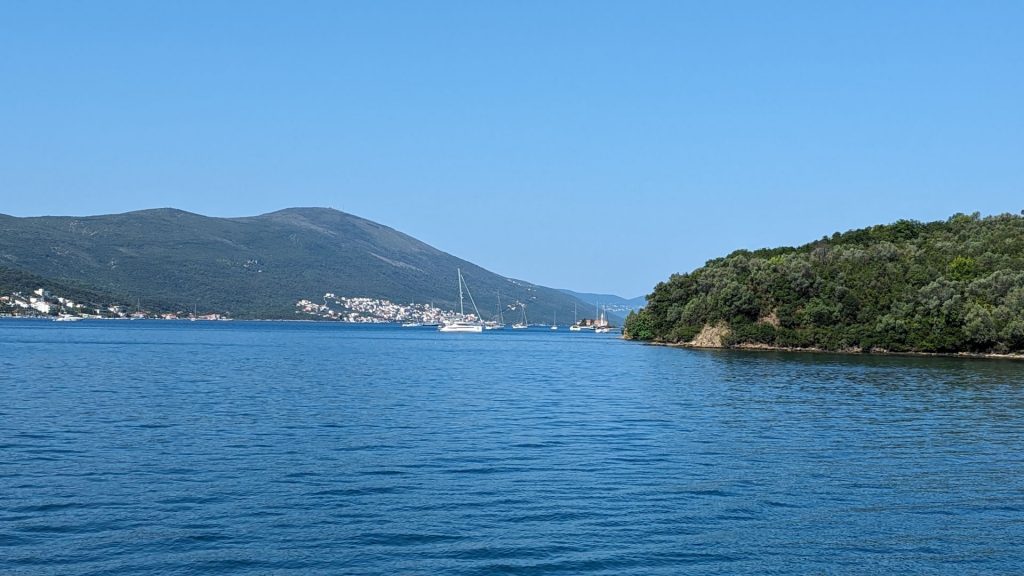
We anchored next to a very small island located about two miles from Porto Montenegro. It was a peaceful and calm anchorage. We took the dinghy to shore and tied her up near some steps to the port. We went to three stores, but didn’t find all that we needed. But we found some stuff, so we were satisfied. And the port was beautiful.
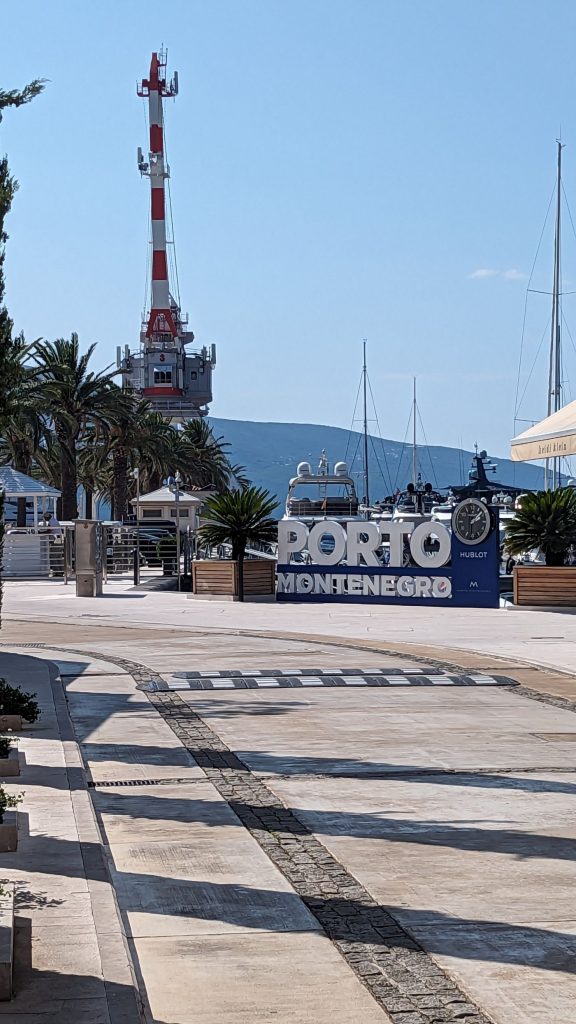
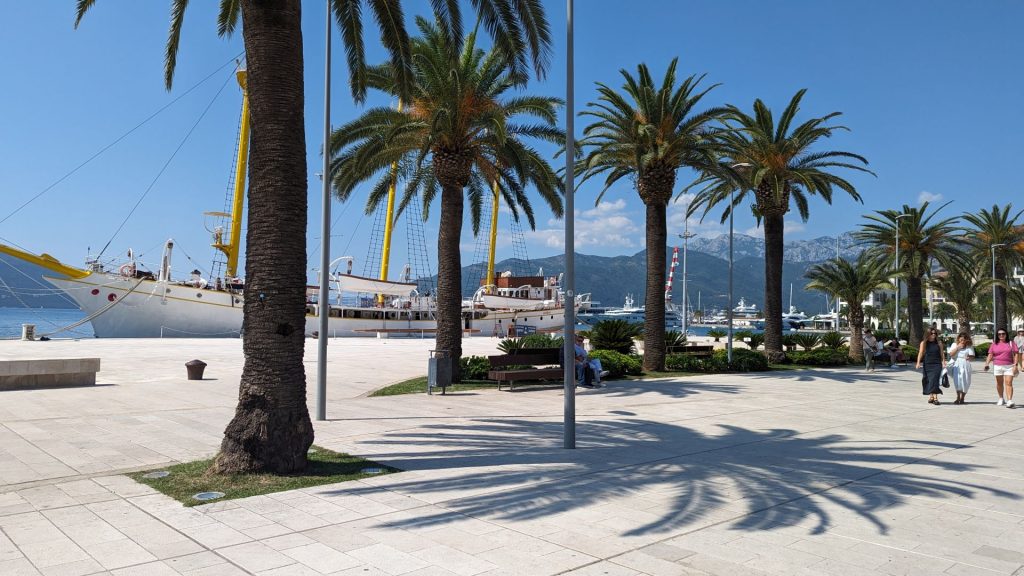
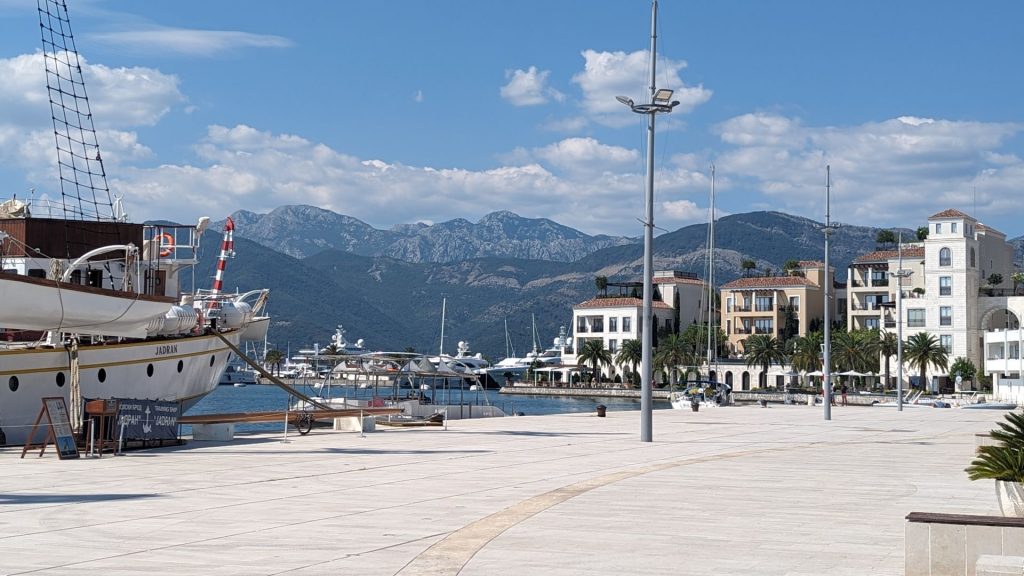
We anchored in a huge bay near Herceg Novi that night. We were setting up for our trip to Bar the next day, where we would check out of Montenegro. We arrived pretty late, so we ate on the boat. Here are some pictures from our sail to Herceg Novi.
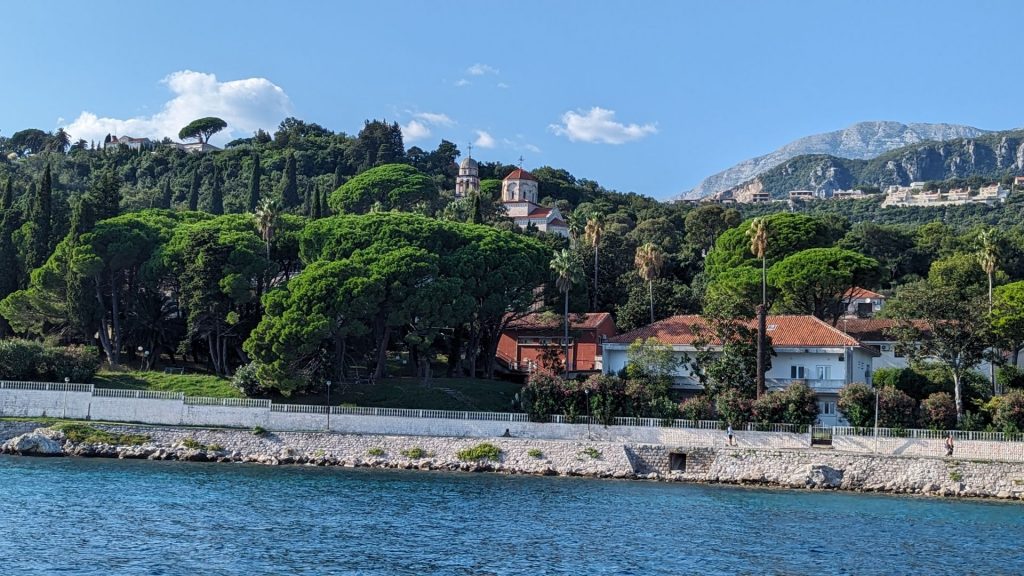
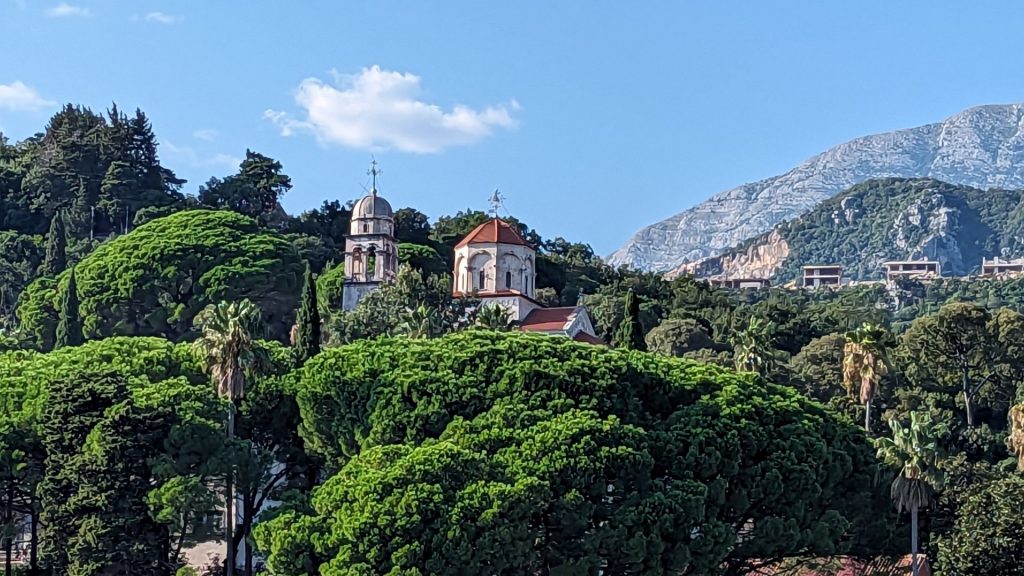
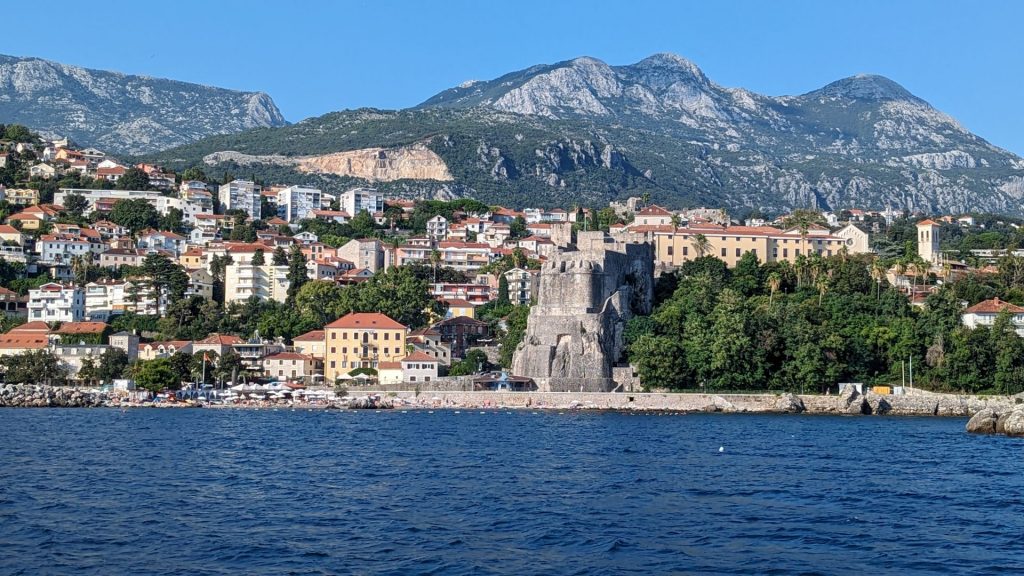
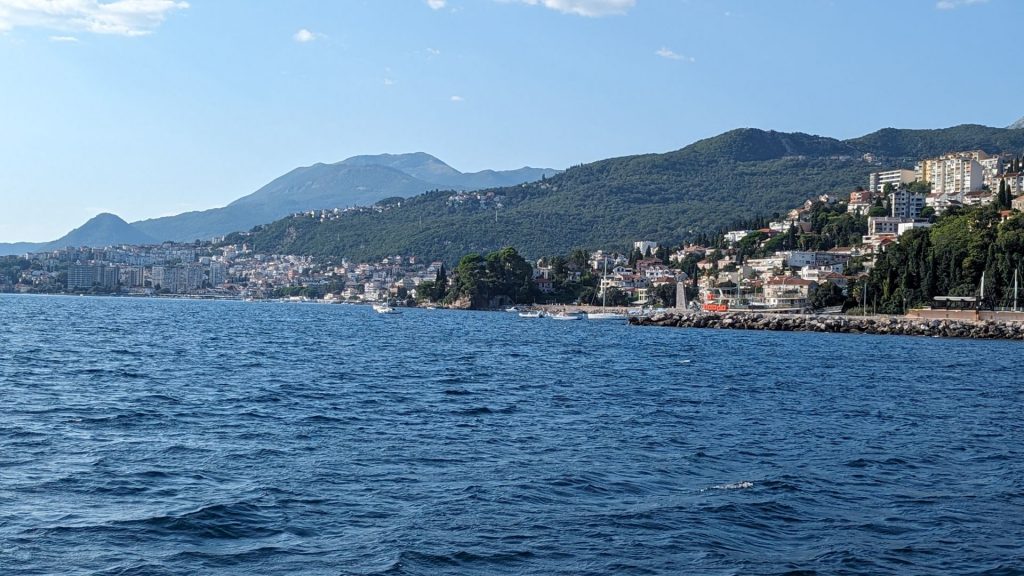
September 9th was dedicated to getting to Bar. It wasn’t a full day trip, but long enough and we didn’t start super early. So we arrived in the late afternoon. We had hoped for some downwind sailing, but the wind was pretty nonexistent. Still, a nice trip.
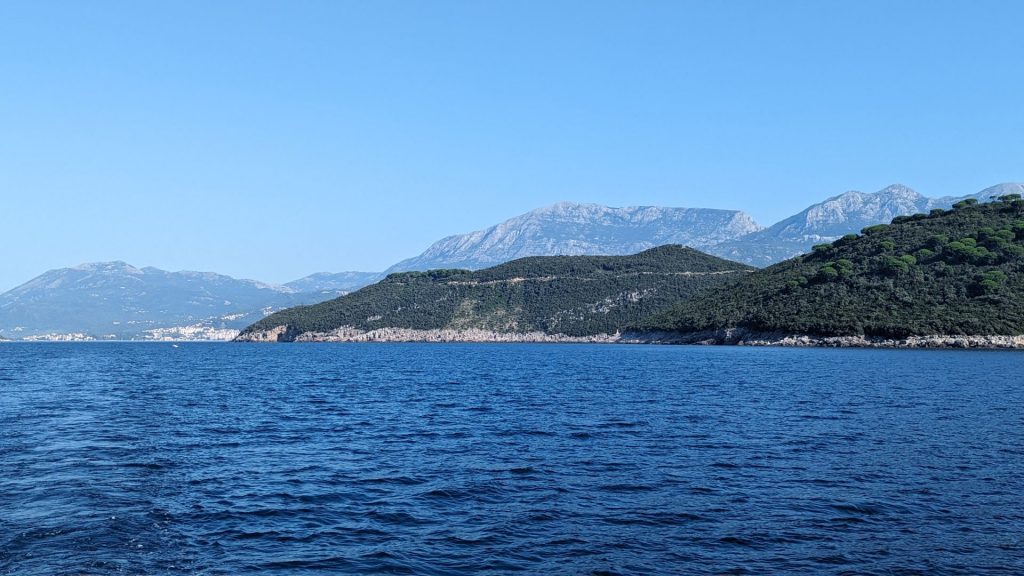
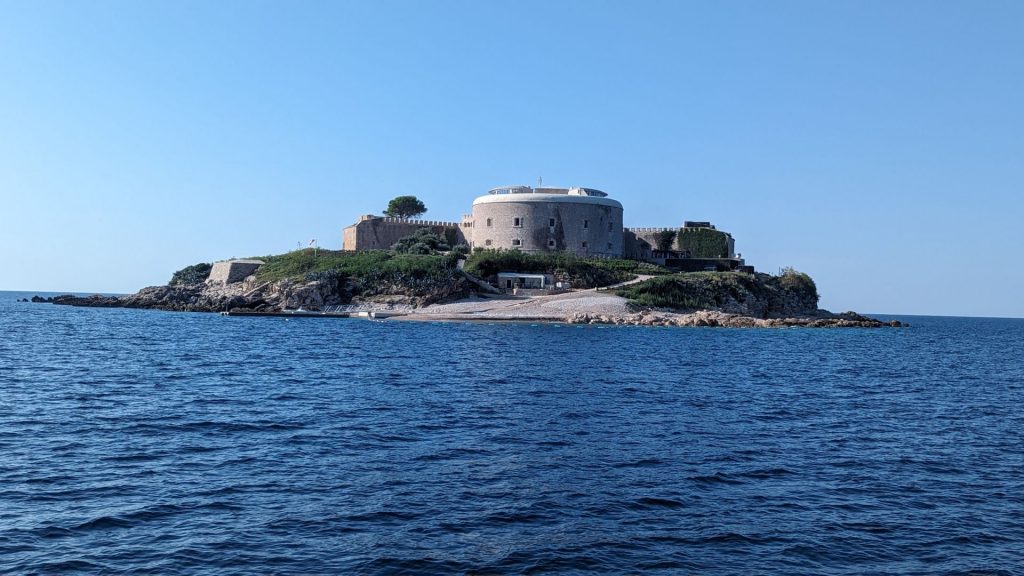
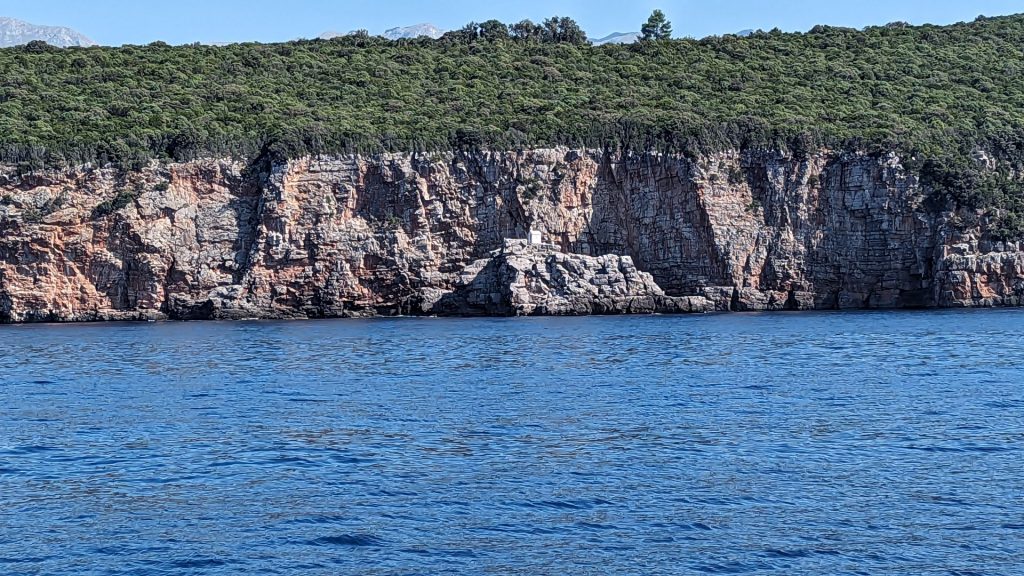
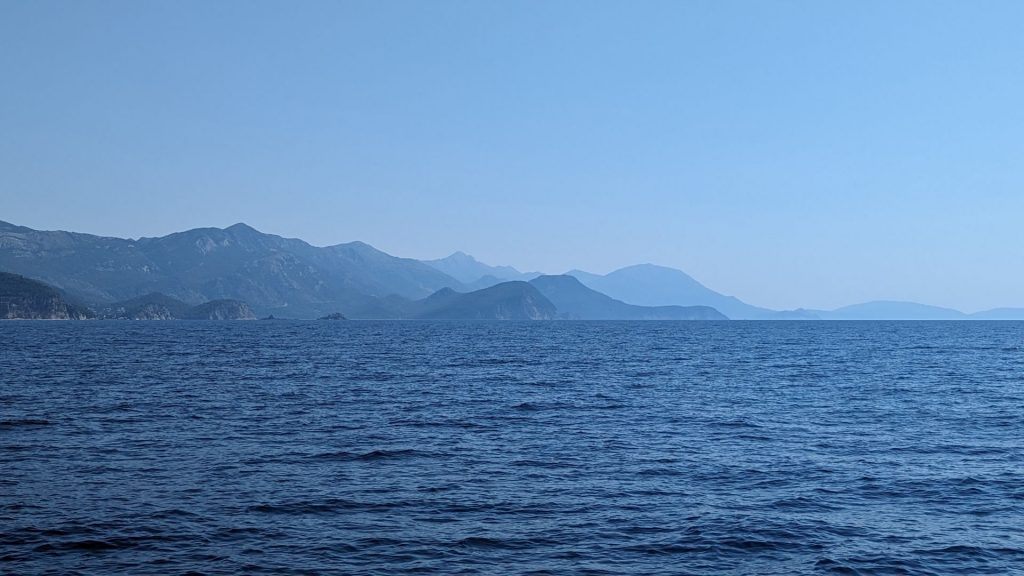
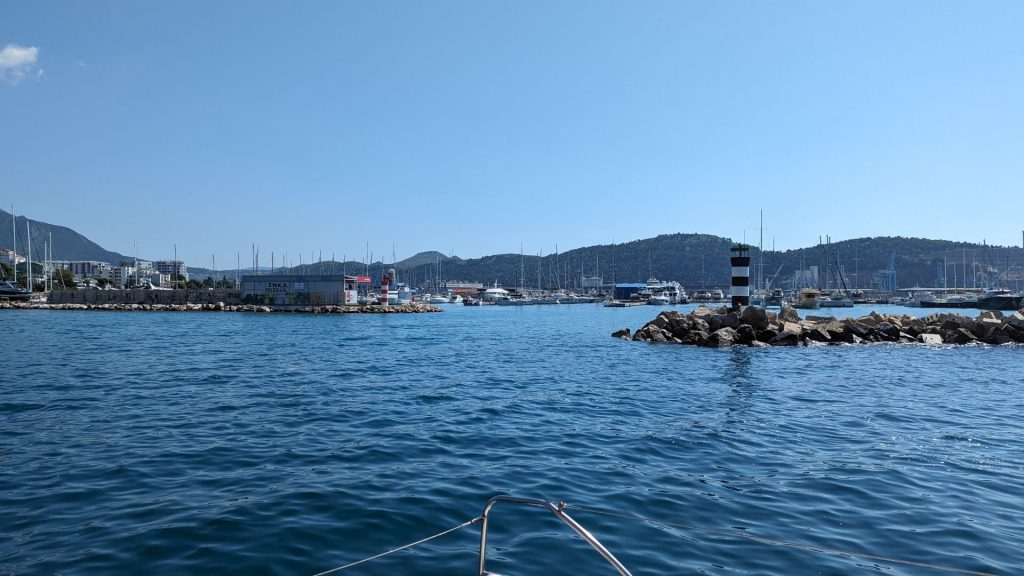
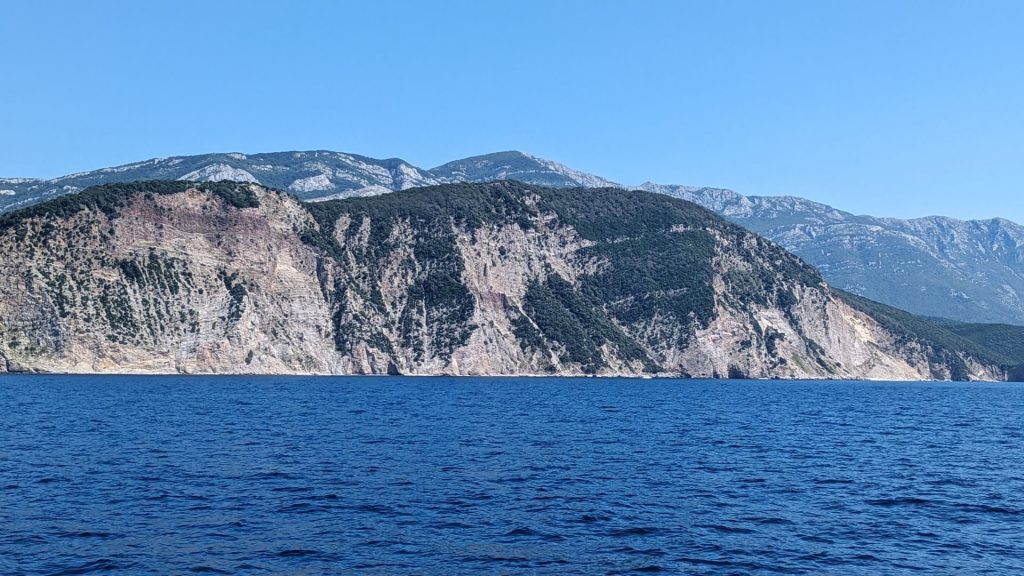
I purchased a few groceries and we had a quiet evening on Seahike. We were up early the next morning to check out. I waited by the boat while Michael did the honors. He was back in short order.
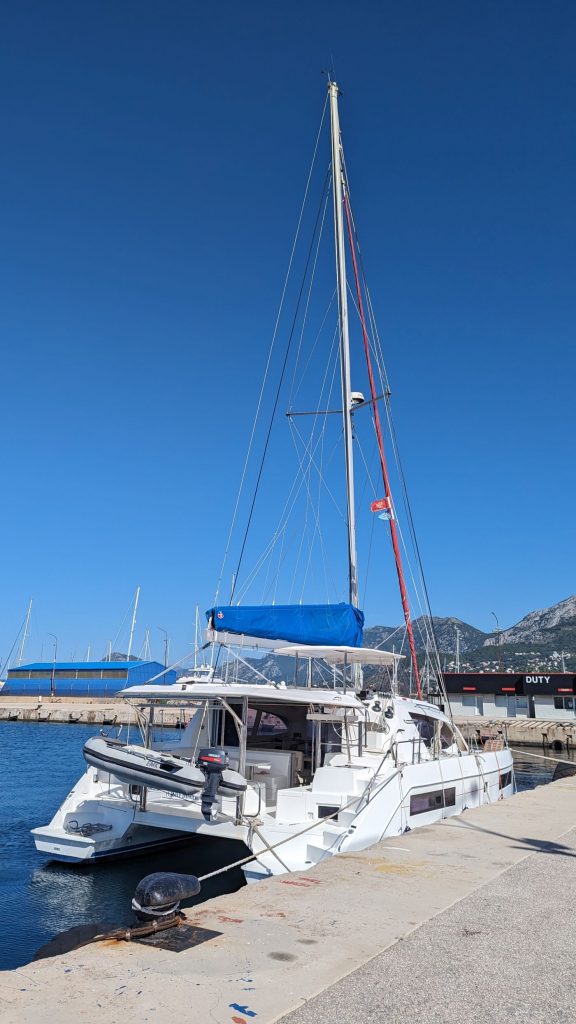
Montenegro was a lovely surprise. We had no idea what to expect. We were sort of lazy during our time there, but we enjoyed it a lot. We needed some lazy time.
And now it was time to go to Corfu to see our wonderful friends, Yulia and Kirill! We have taken down the Montenegrin flag, but the Woman Who Sail the Med pendant is still flying!
